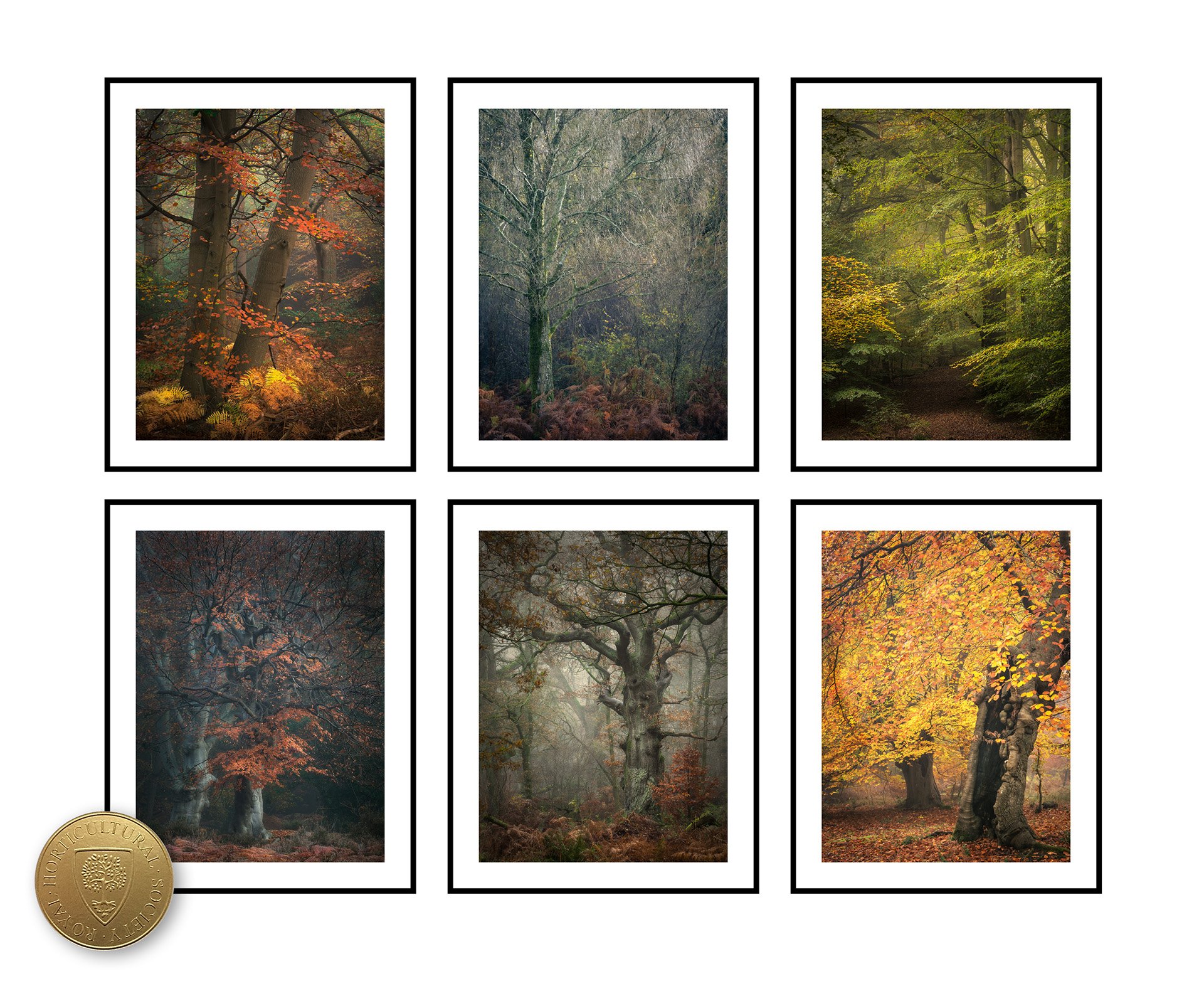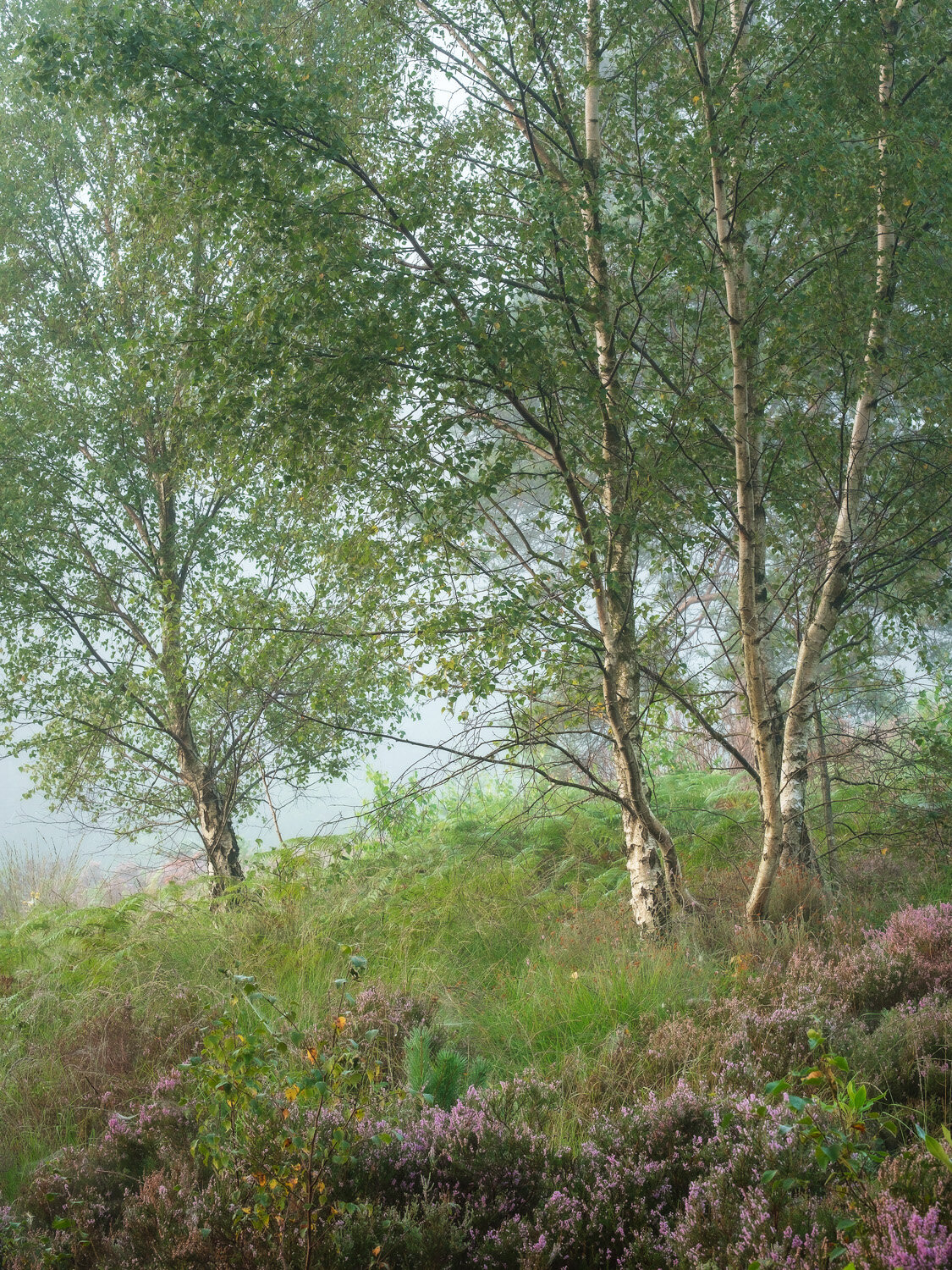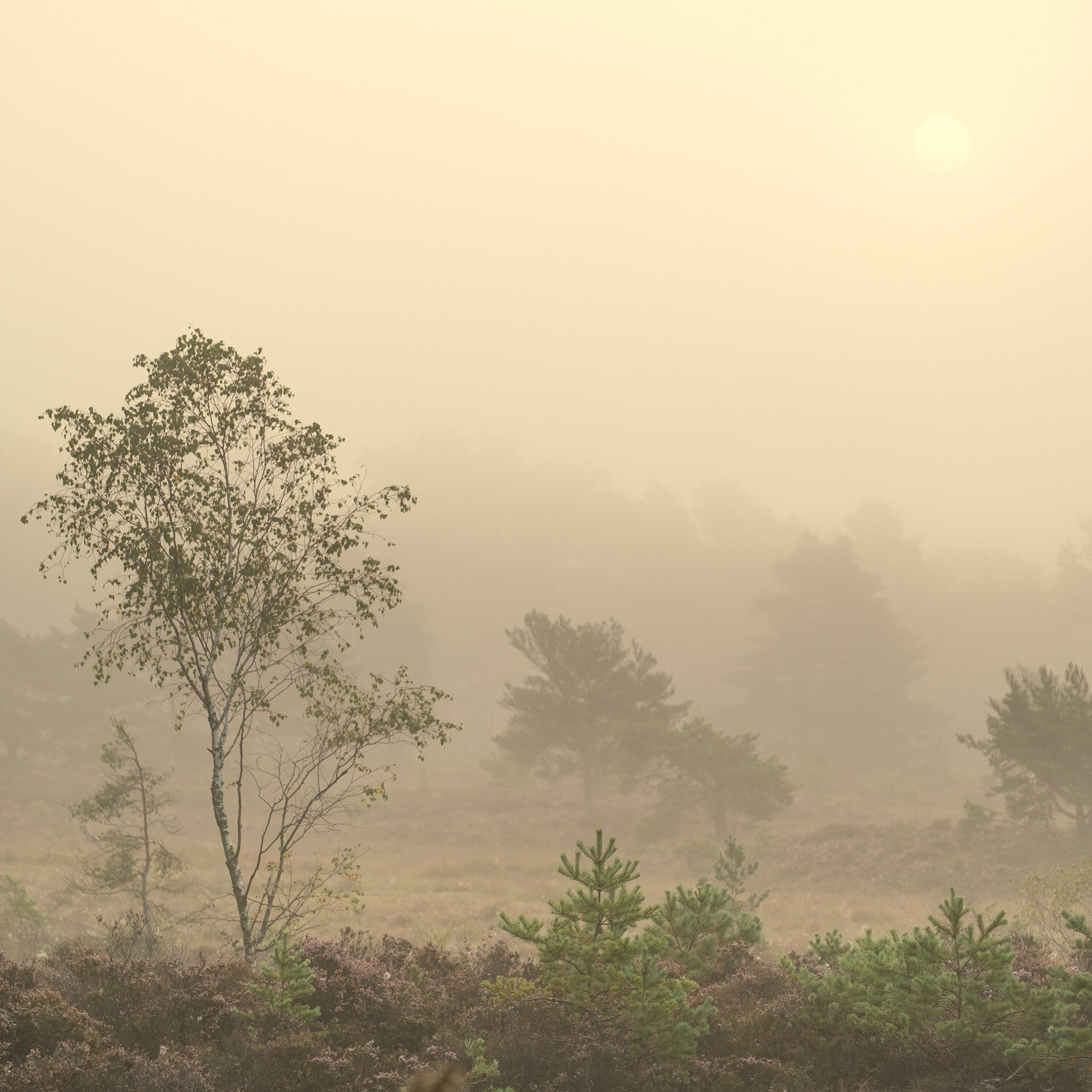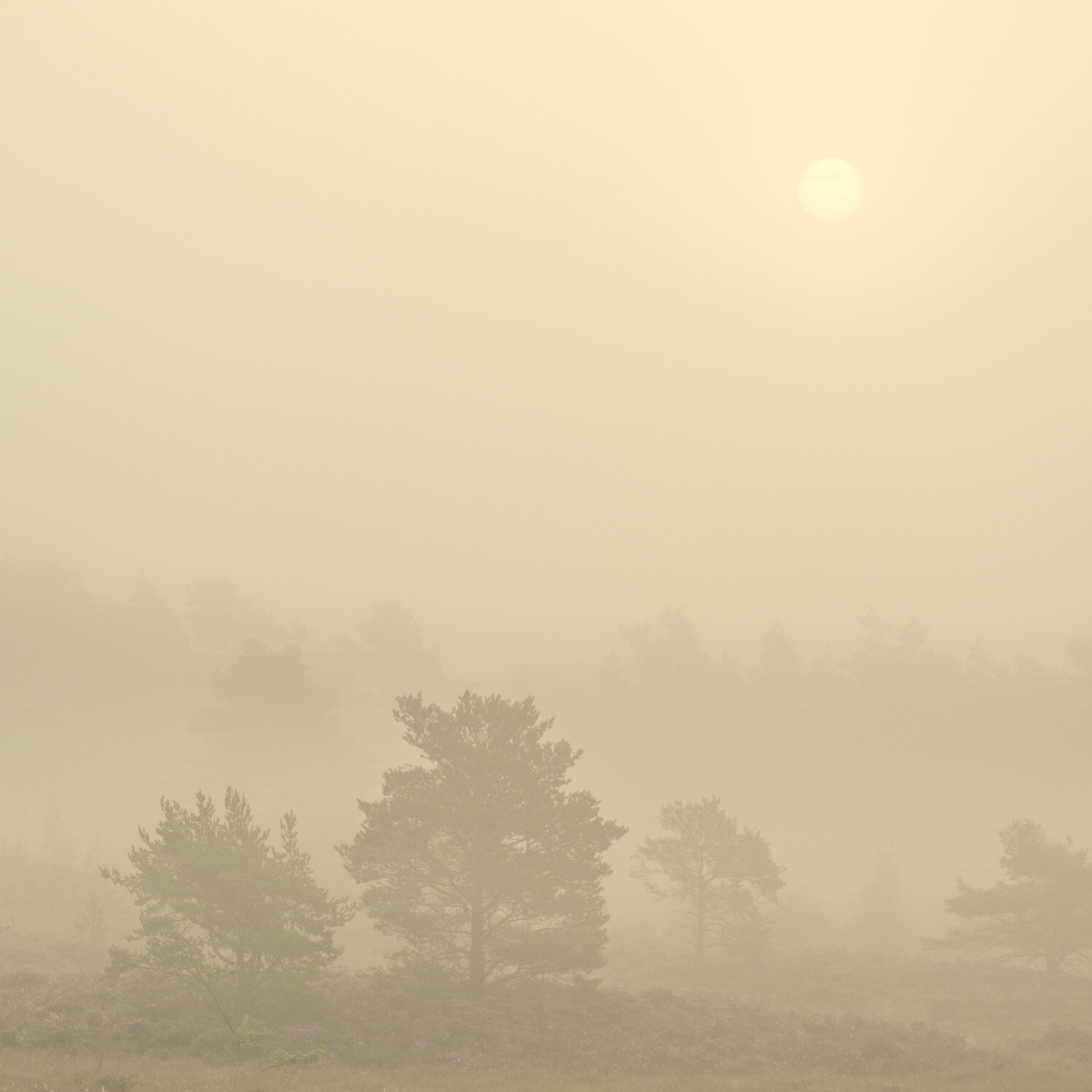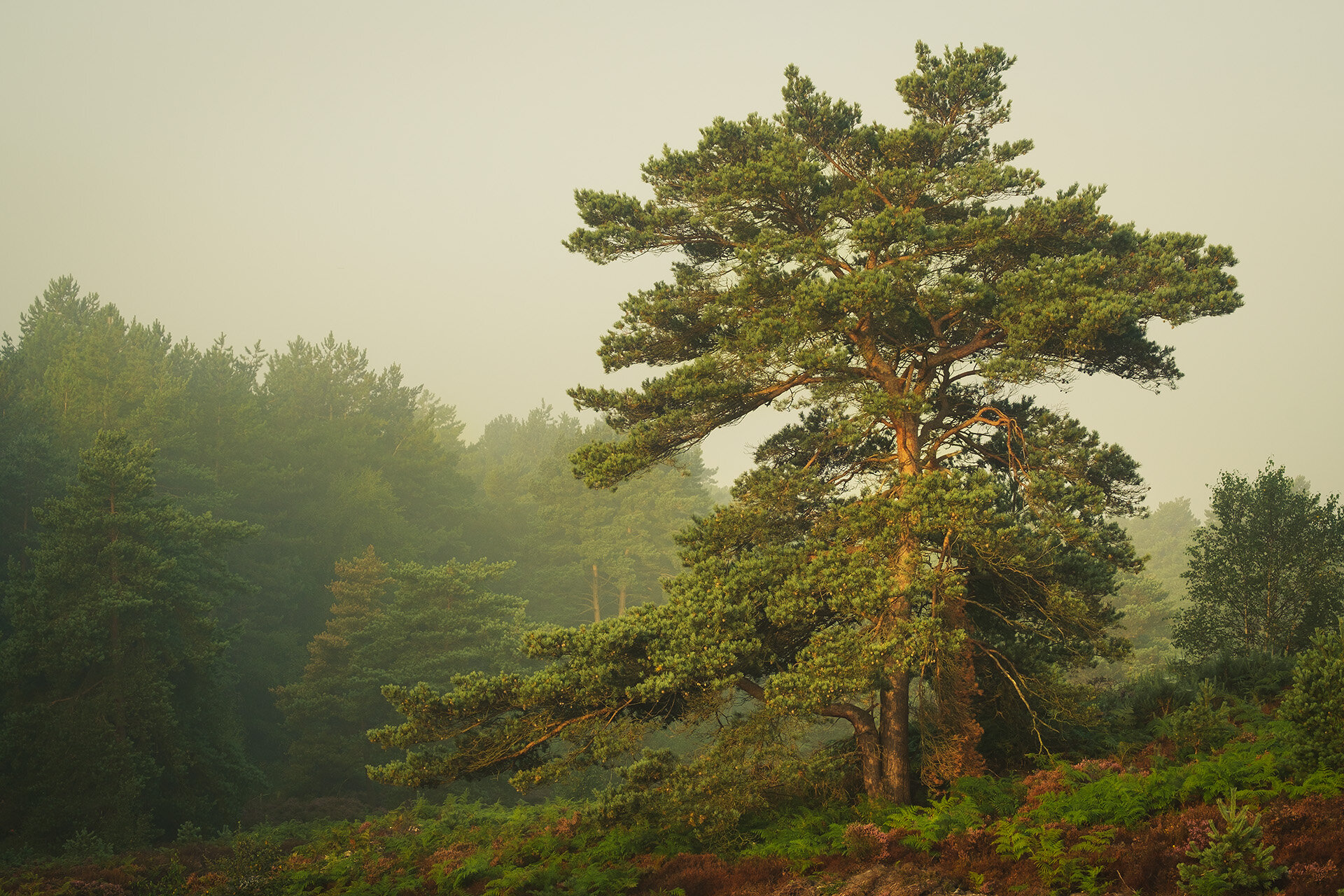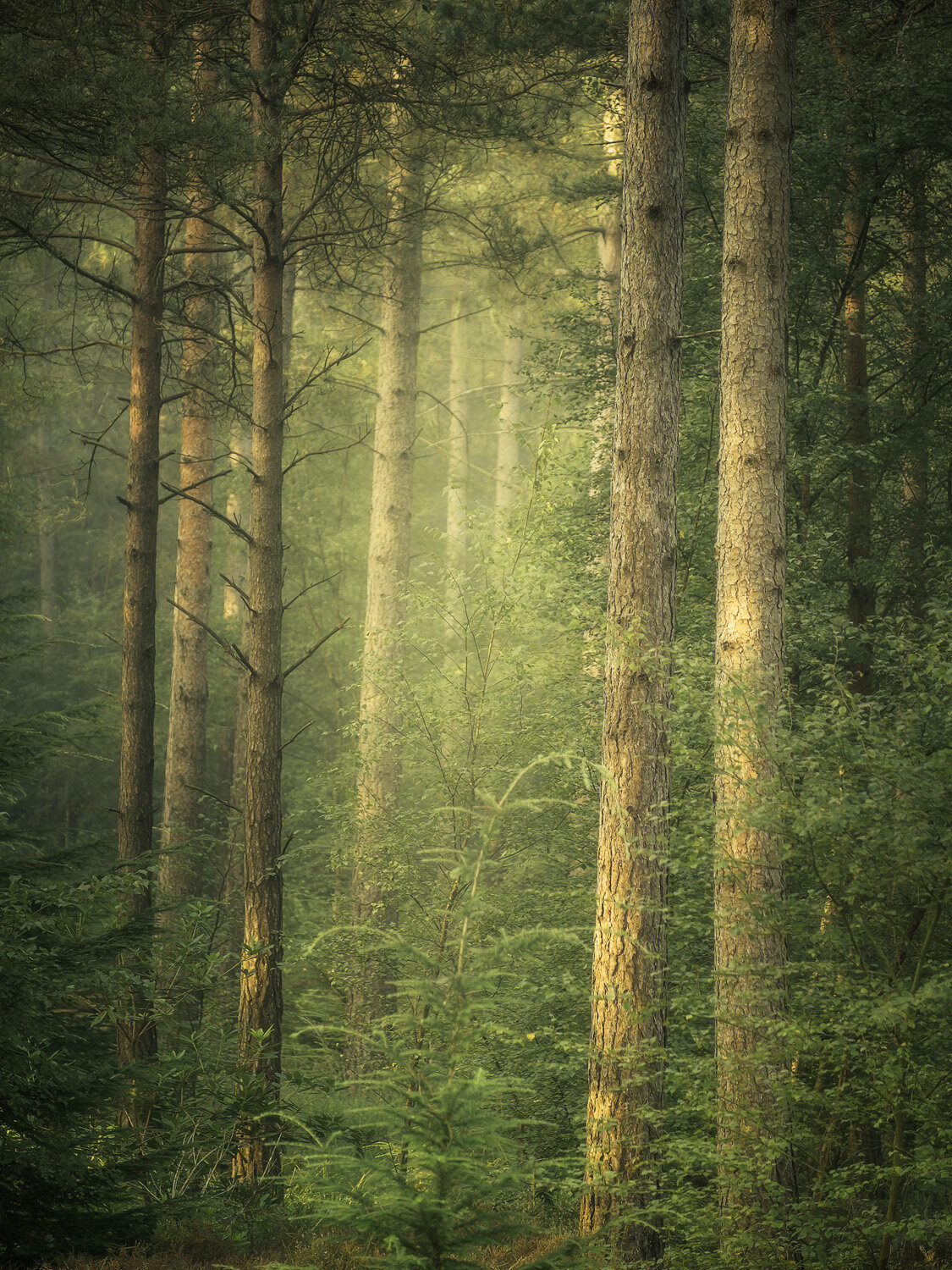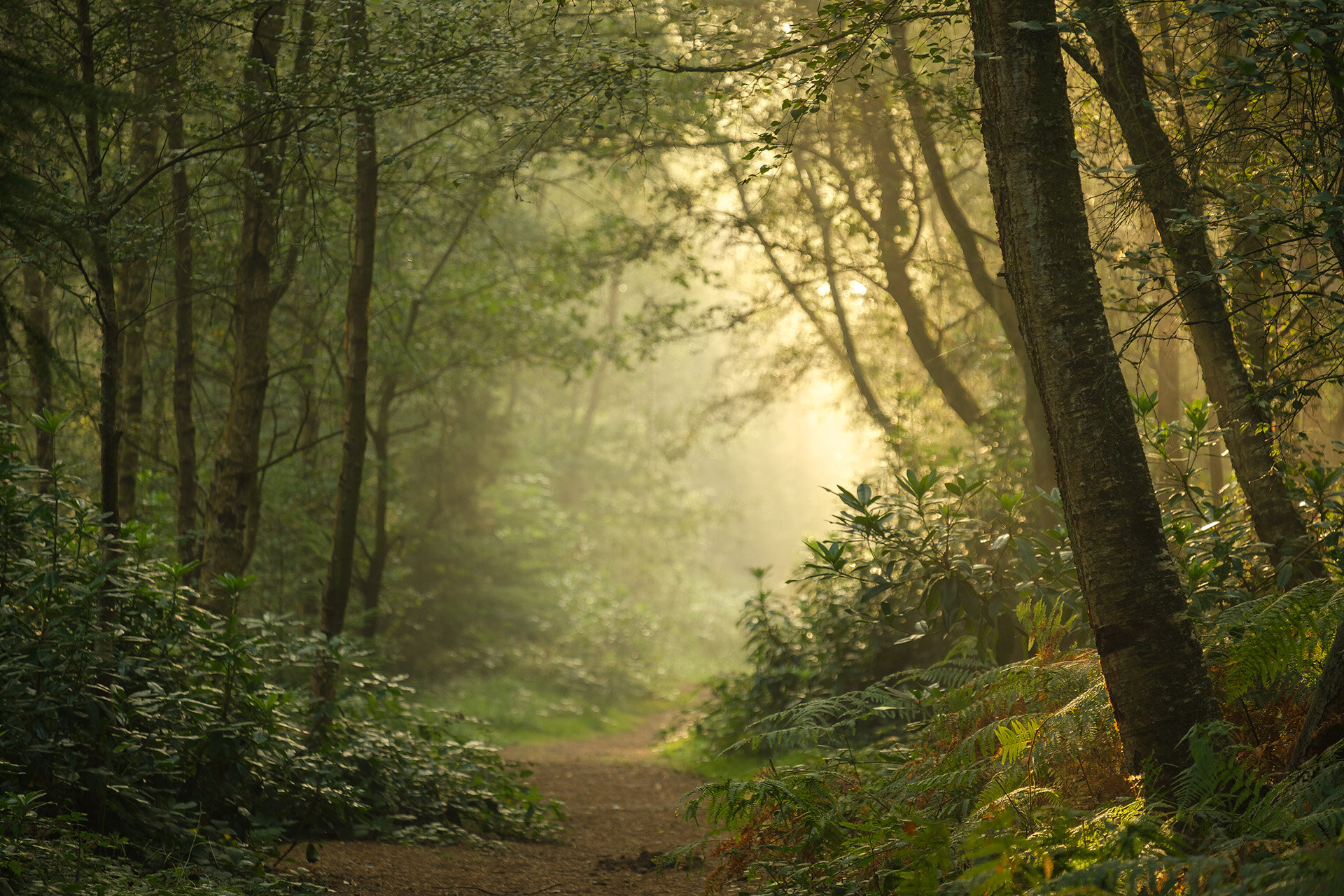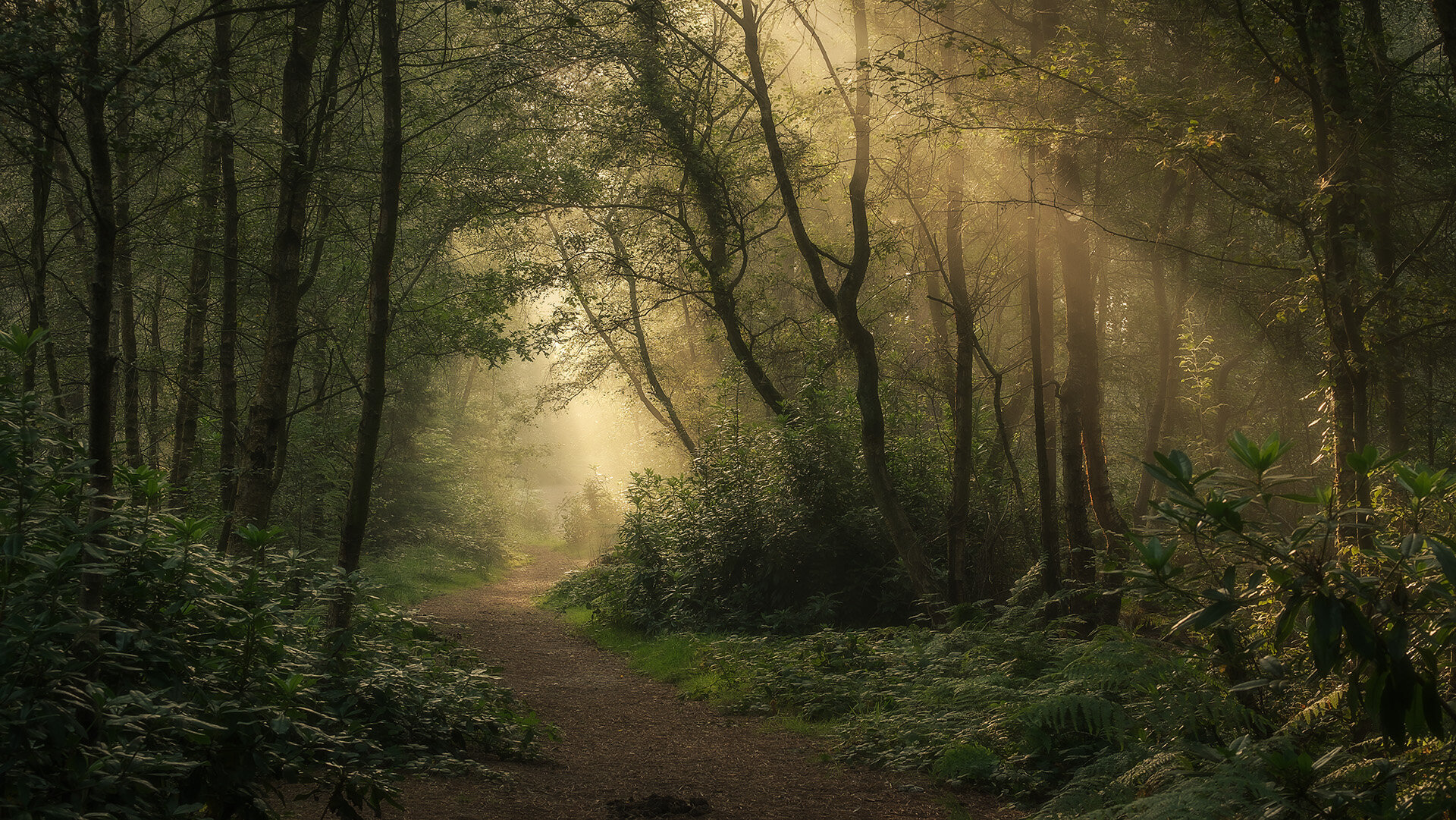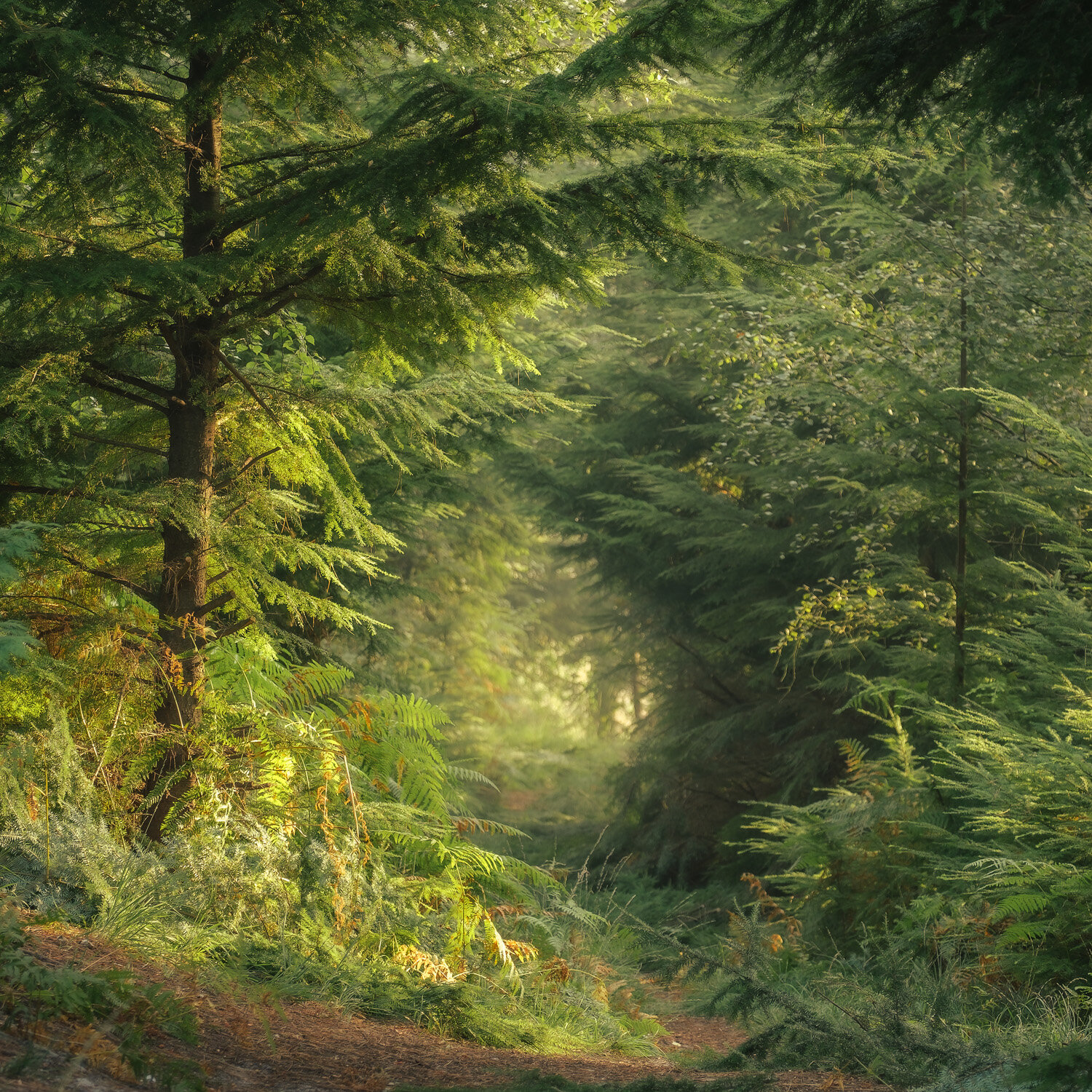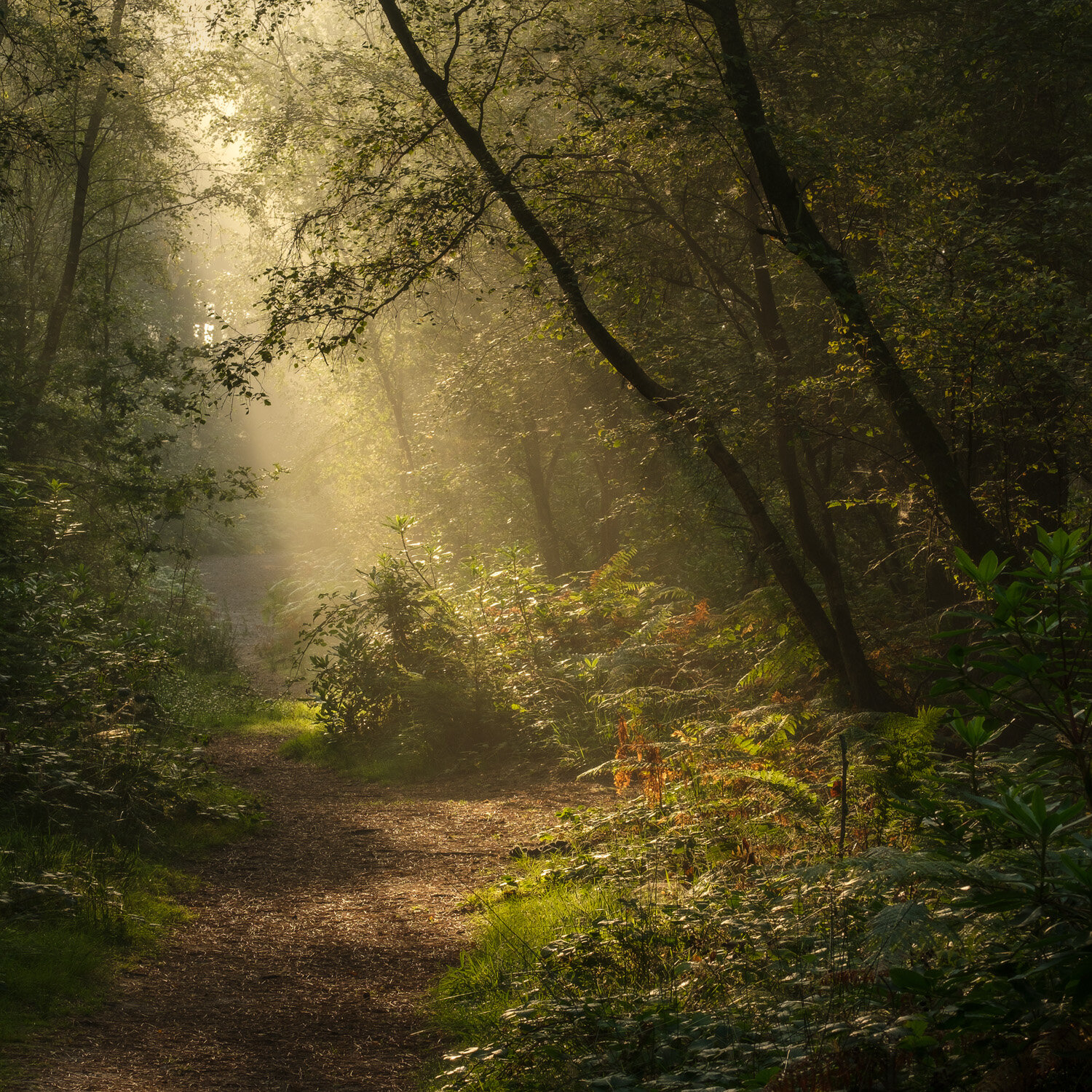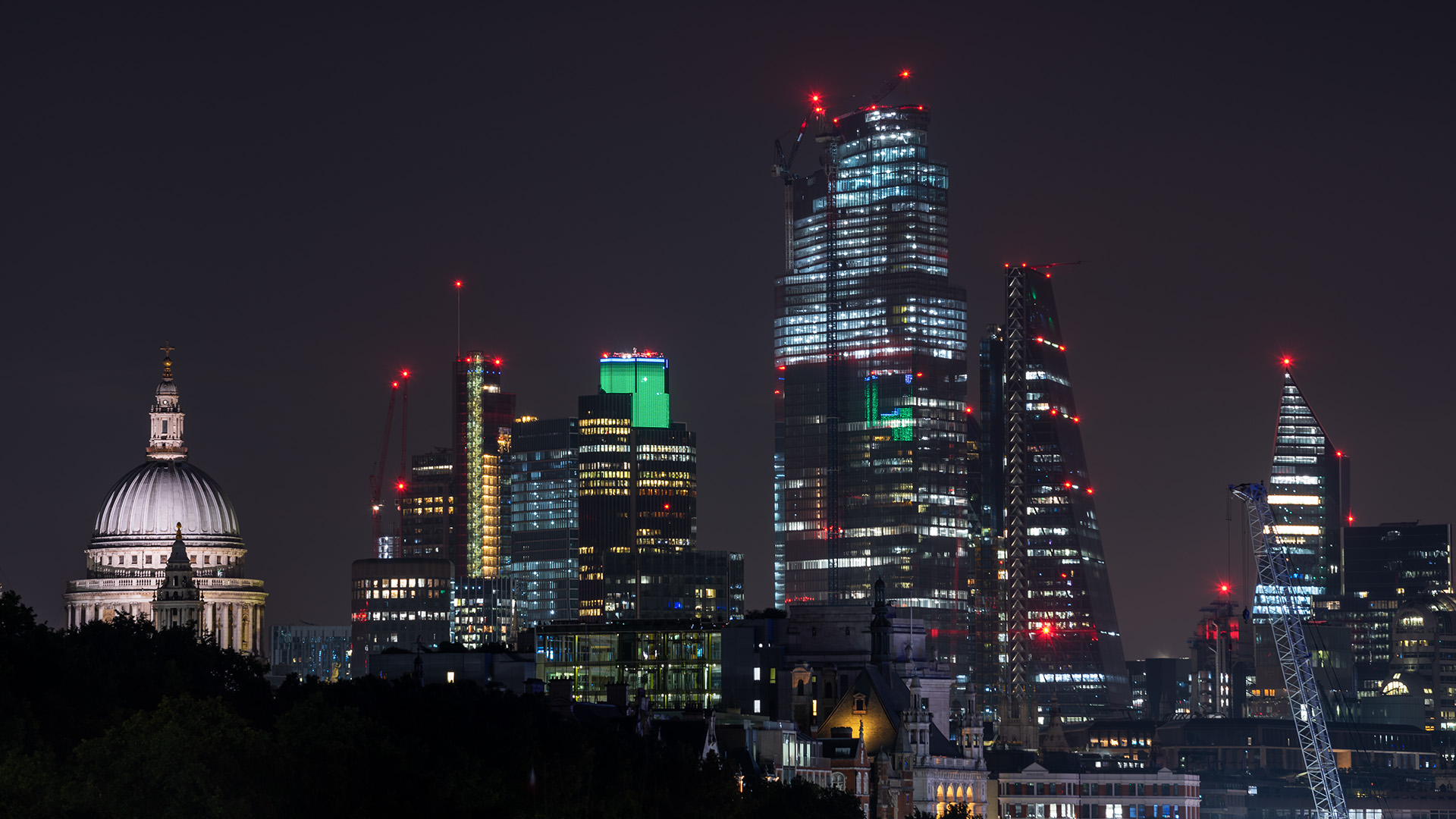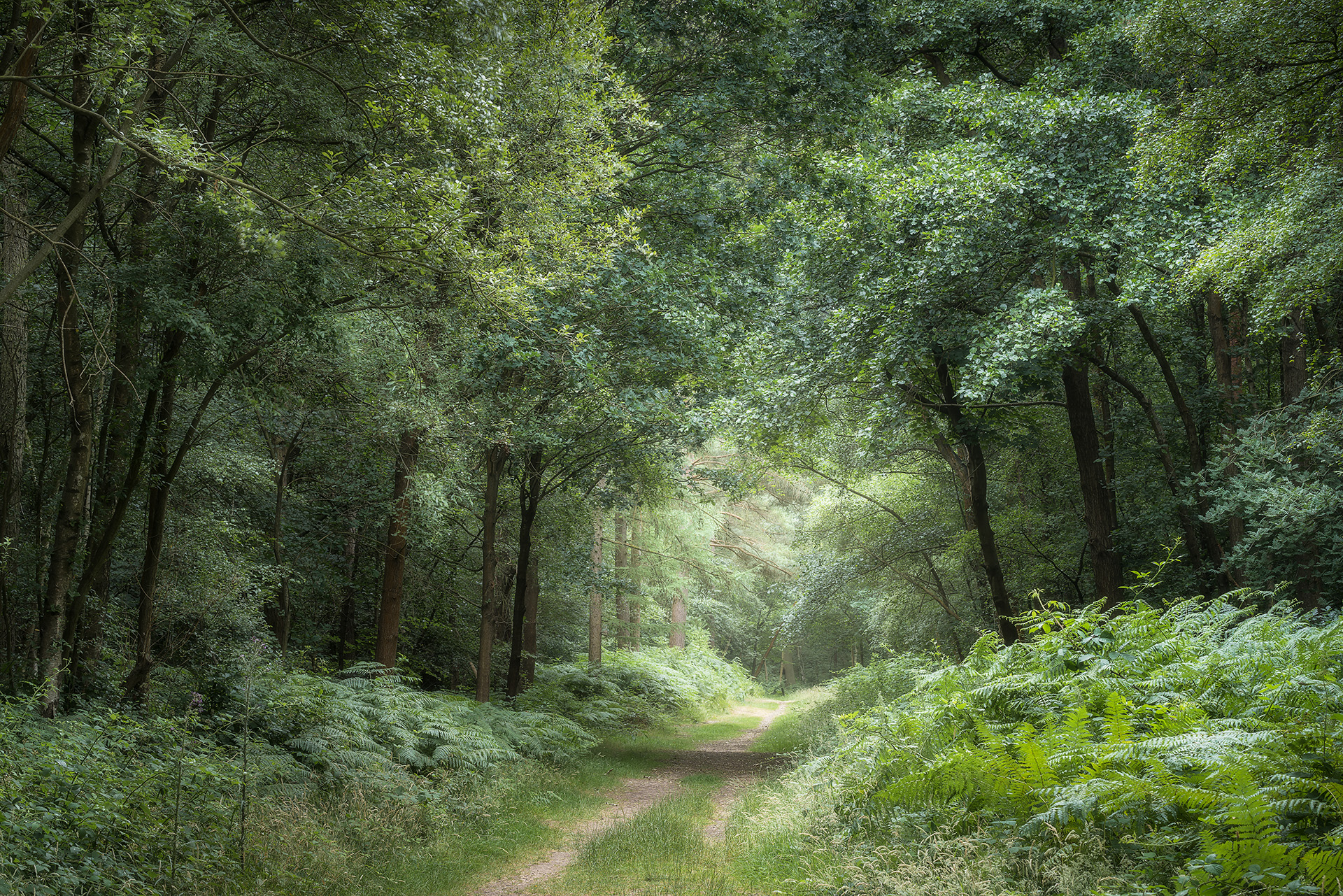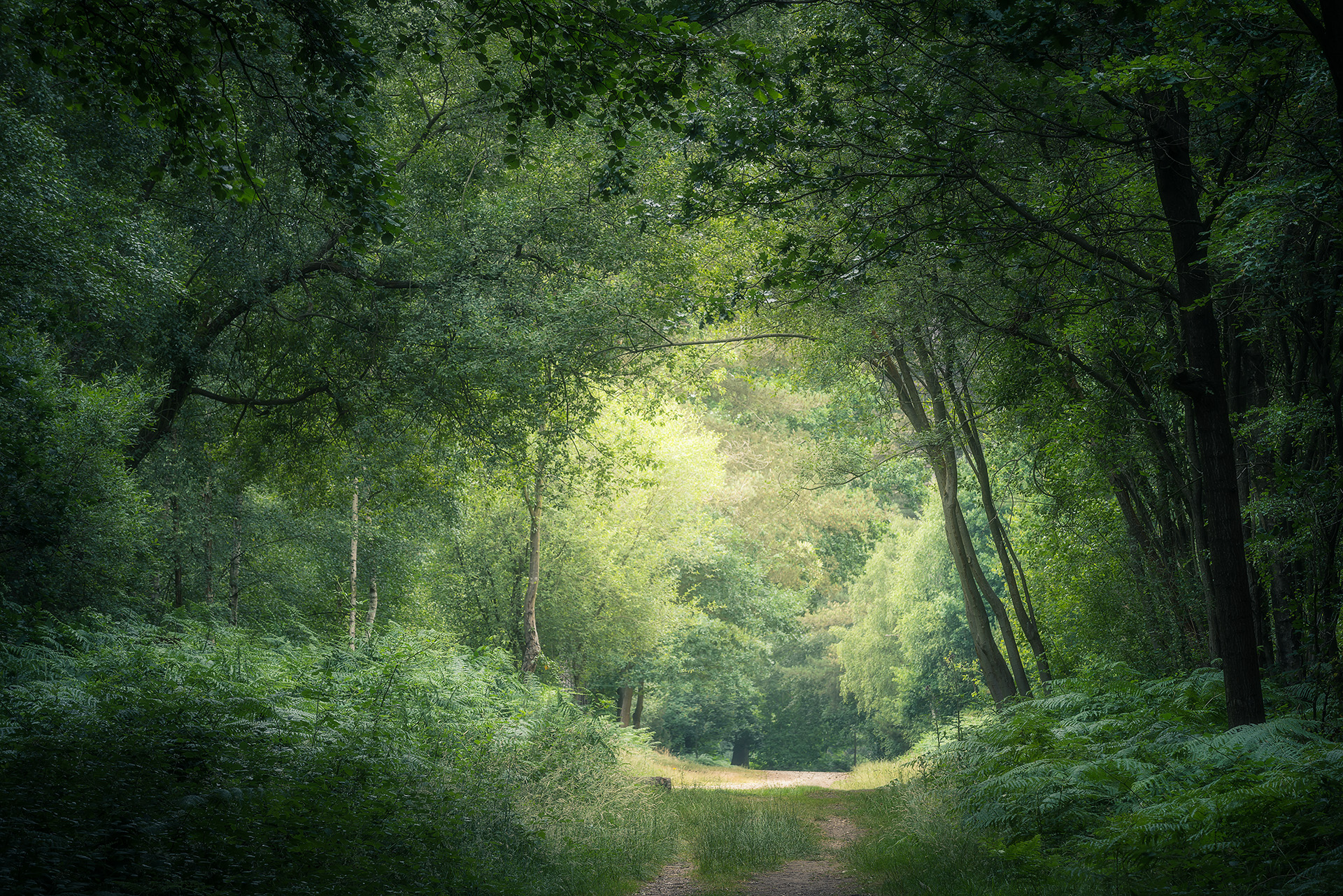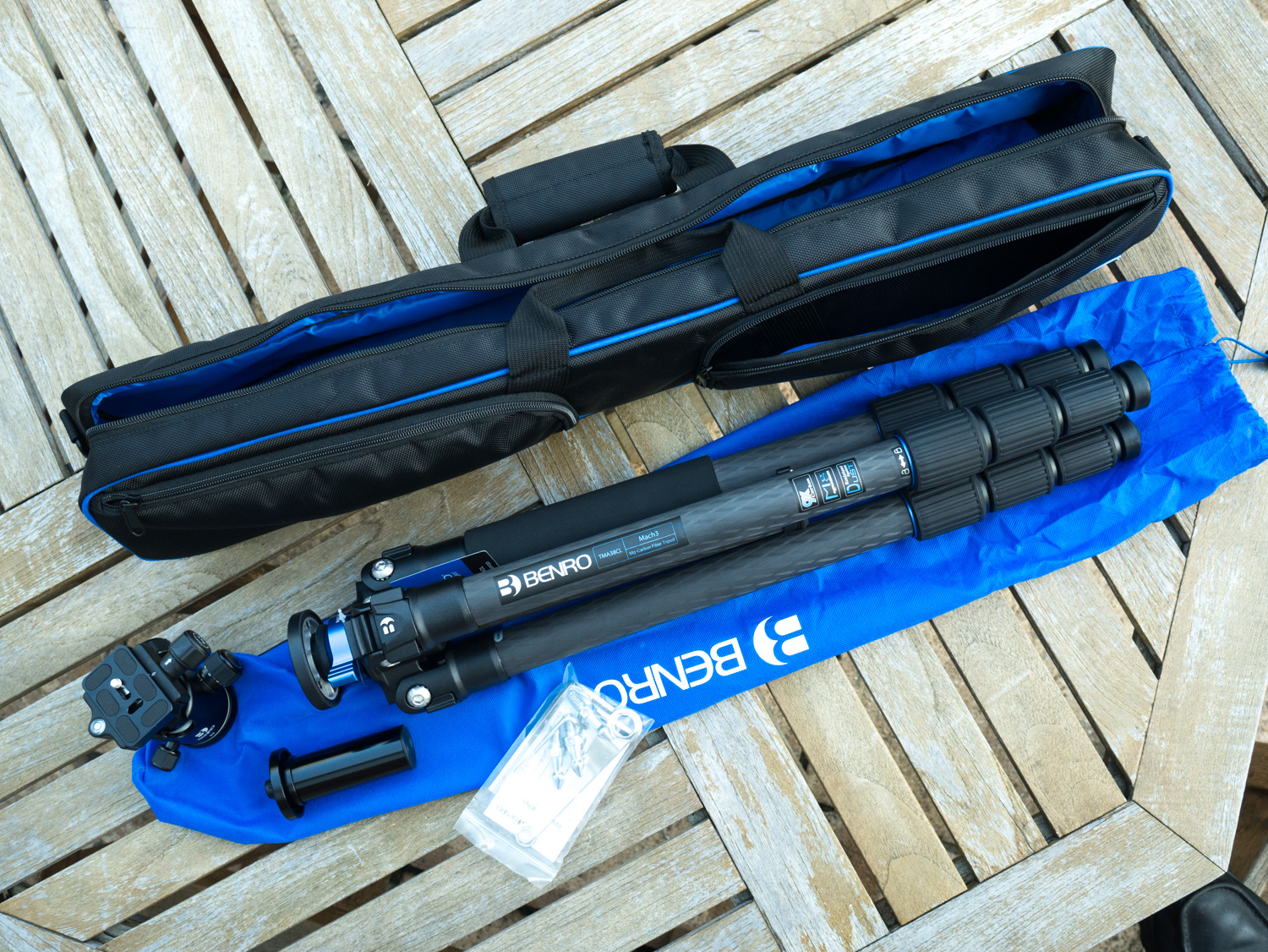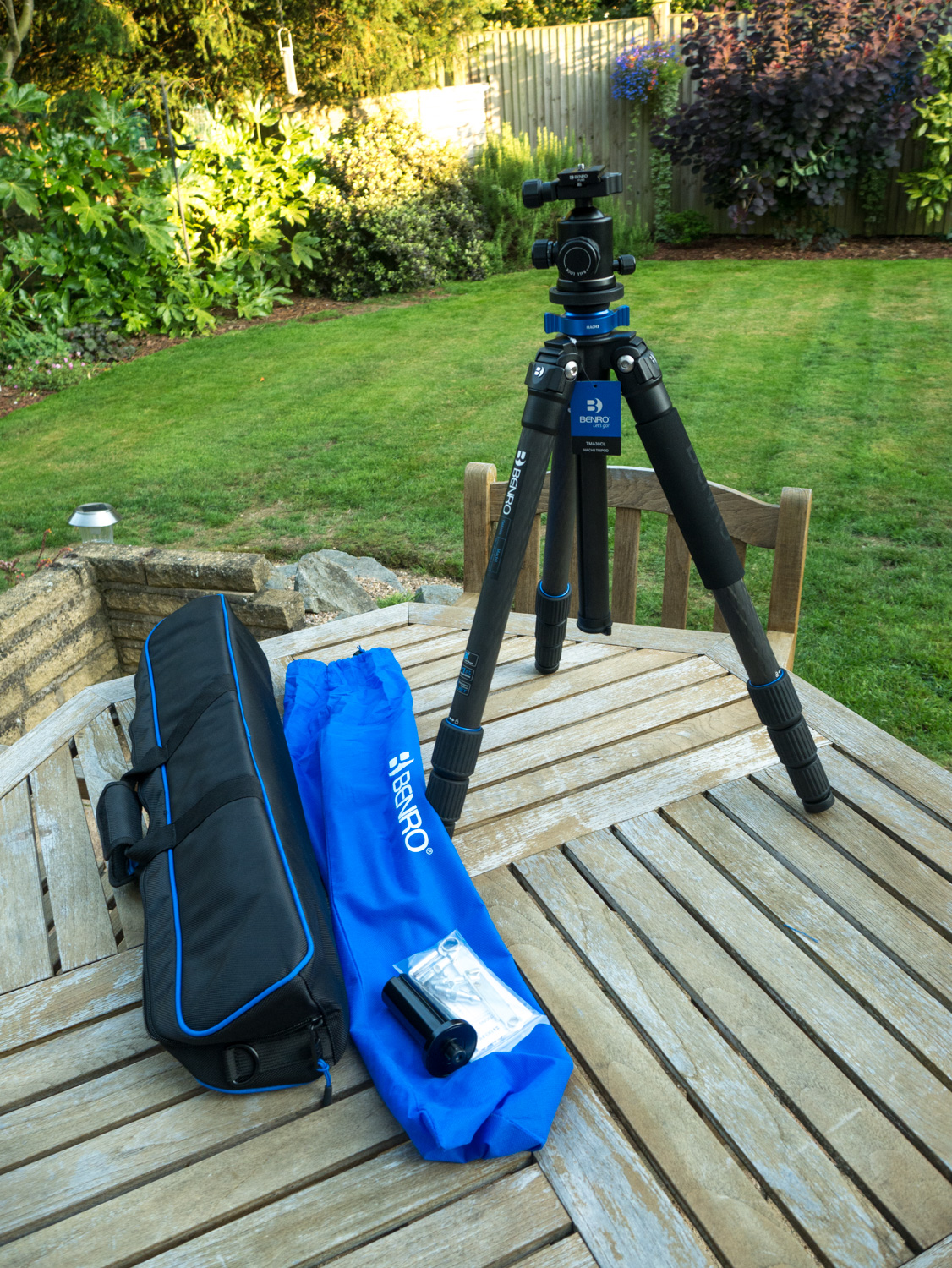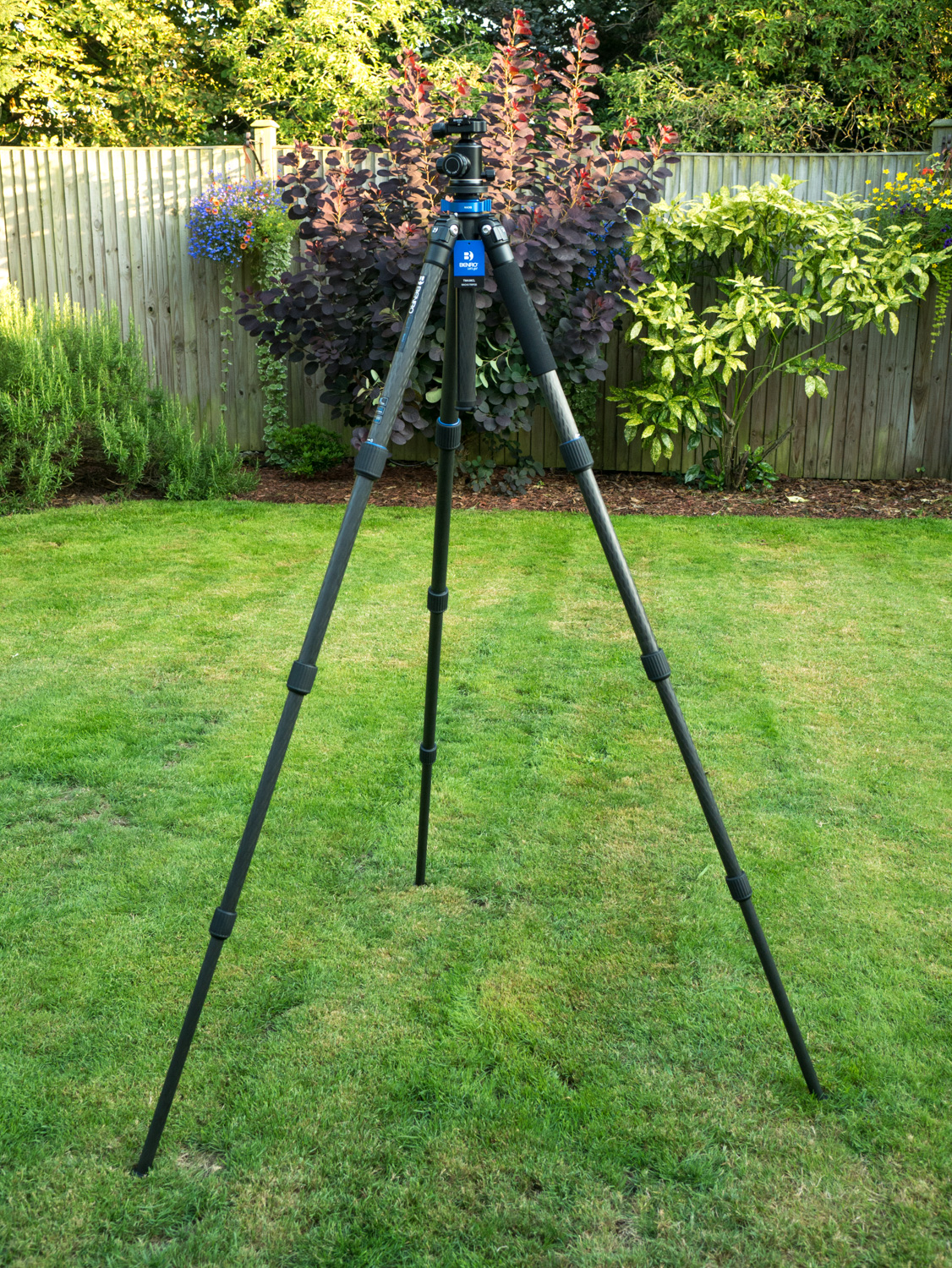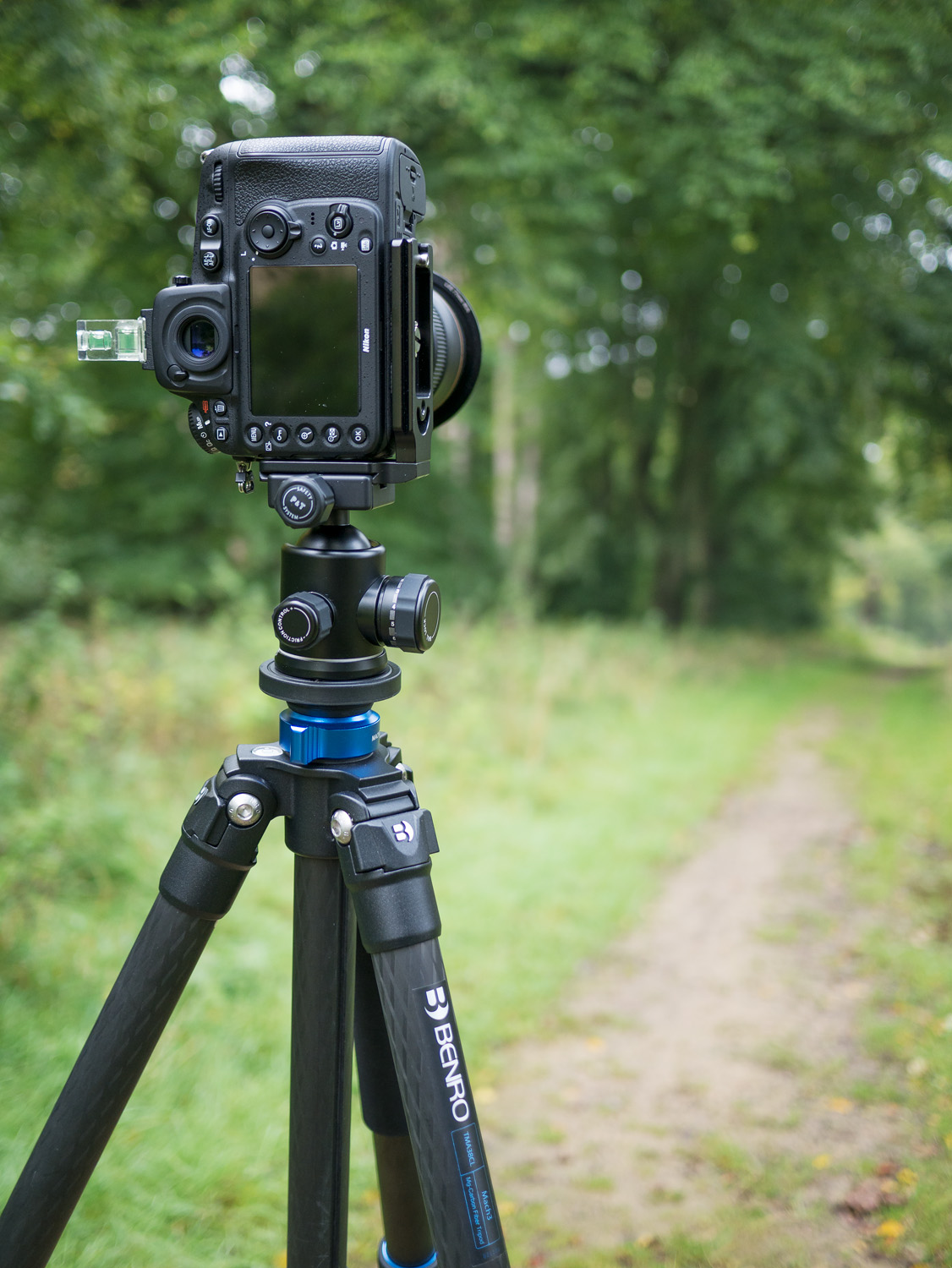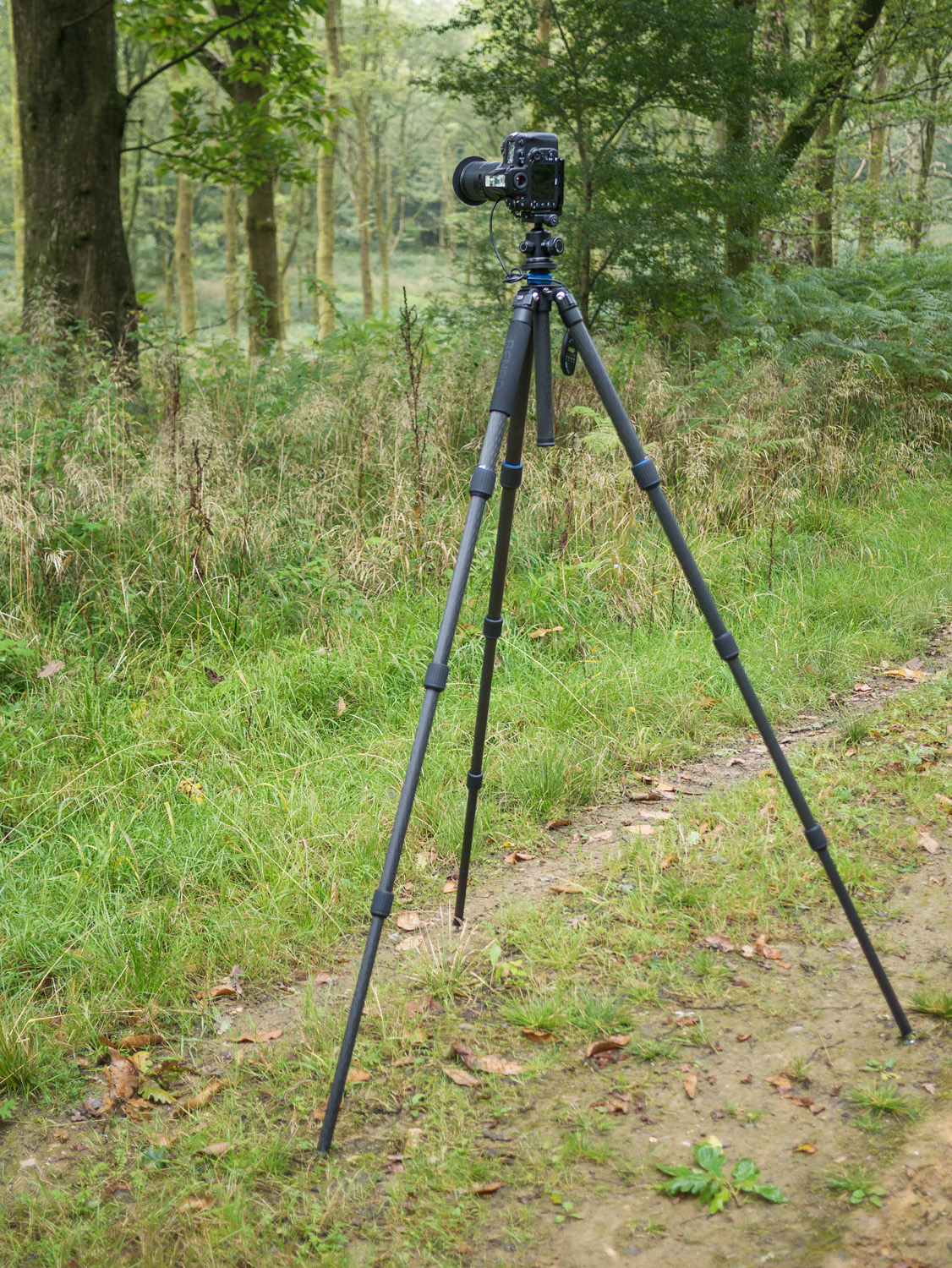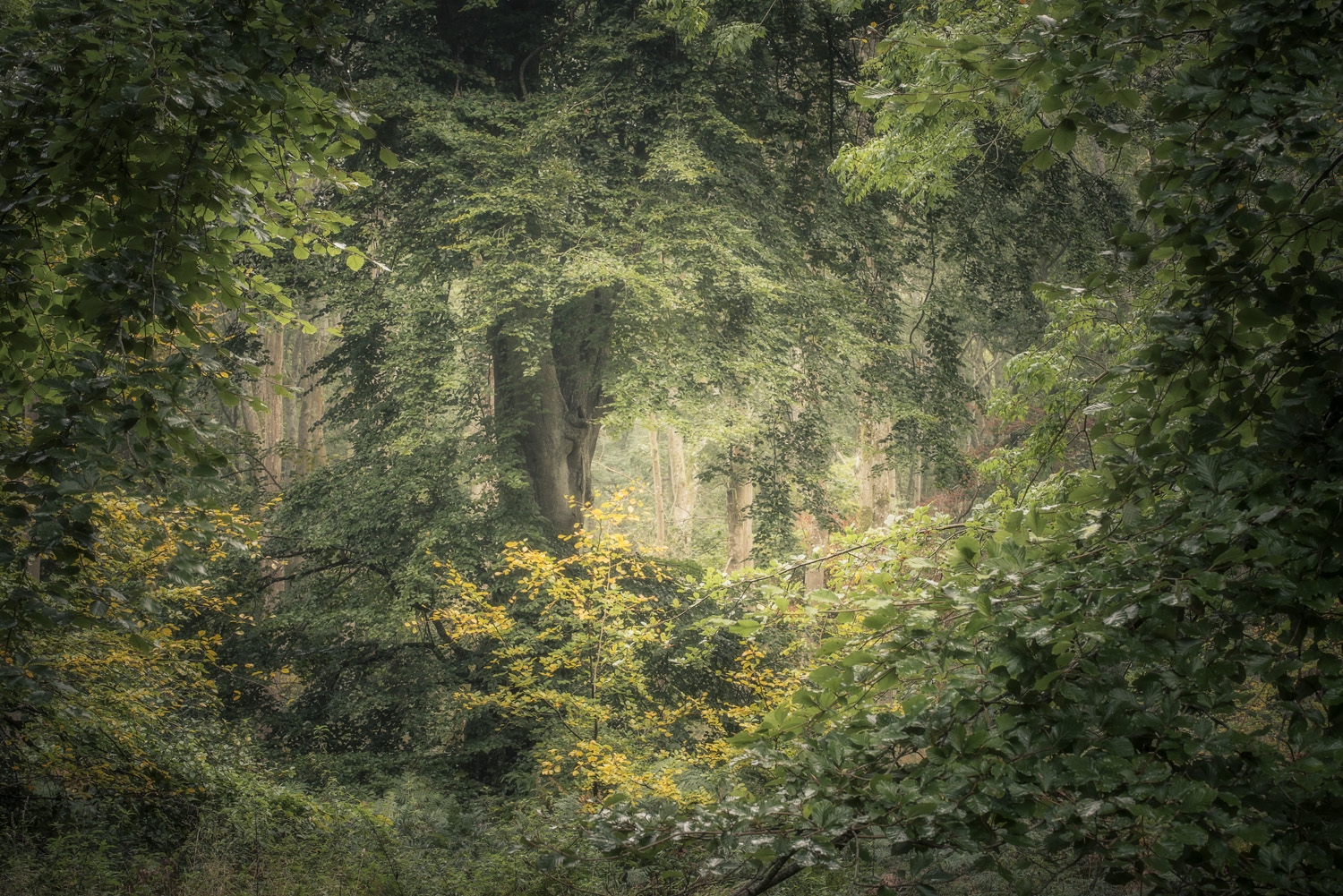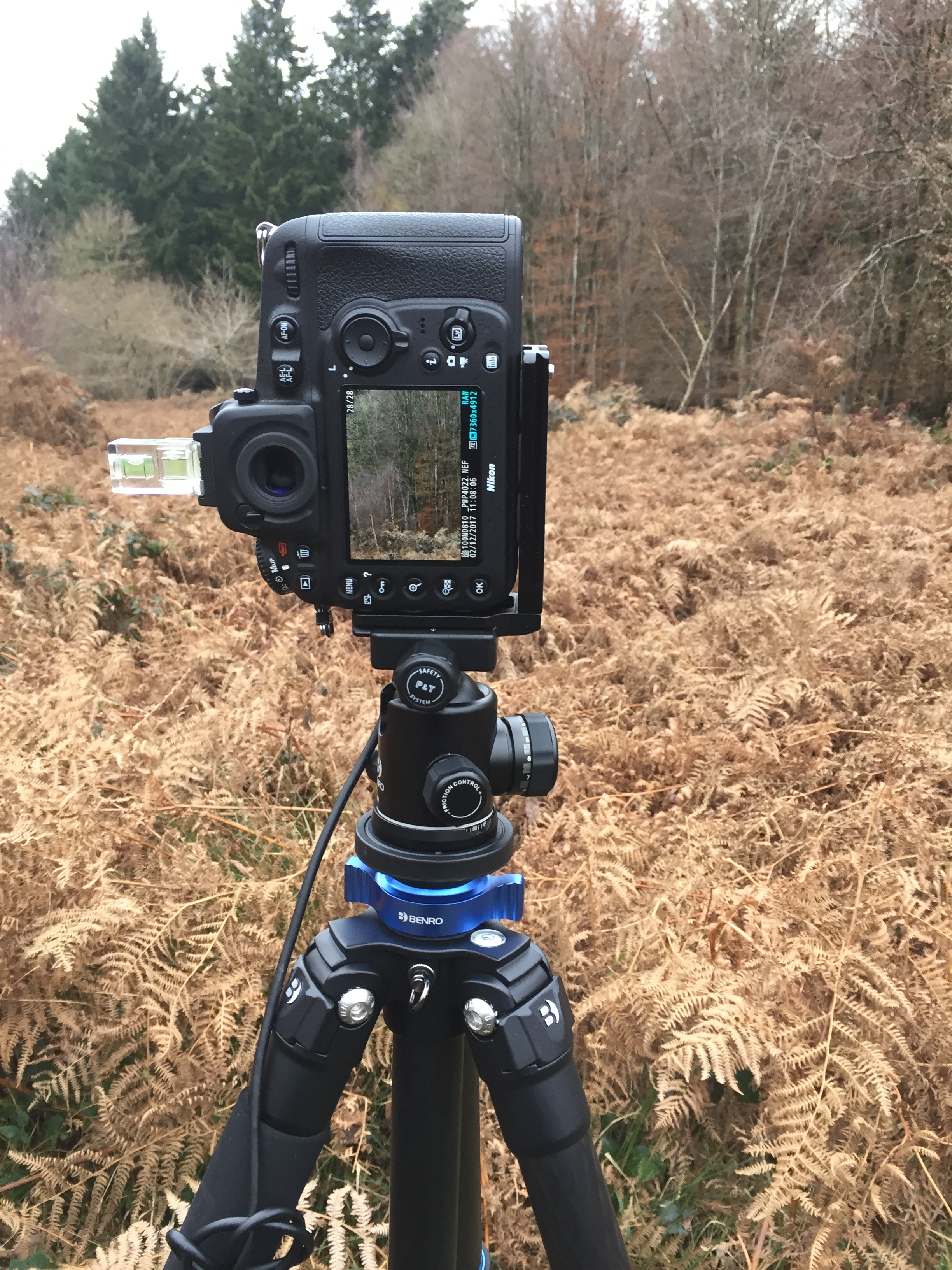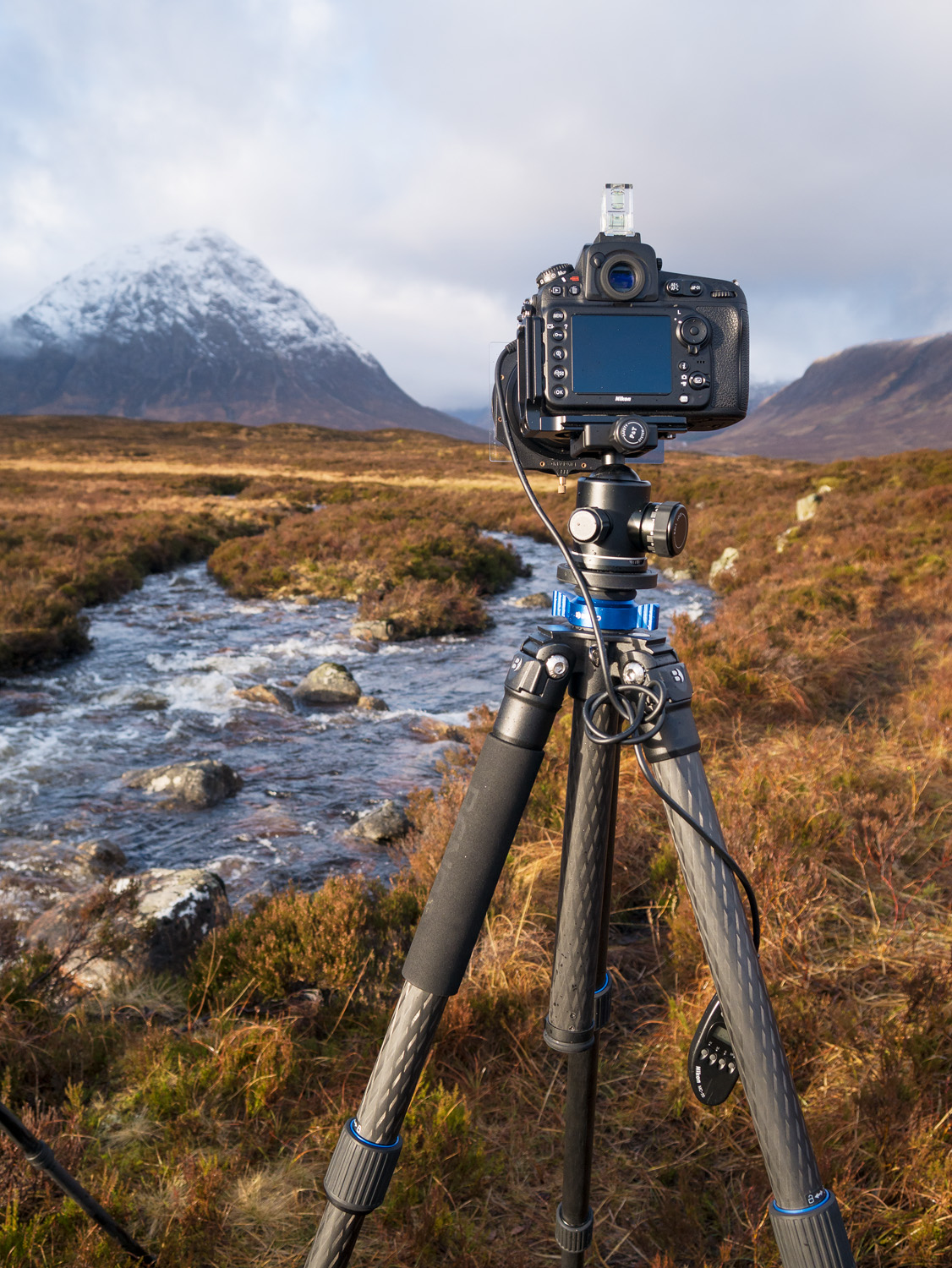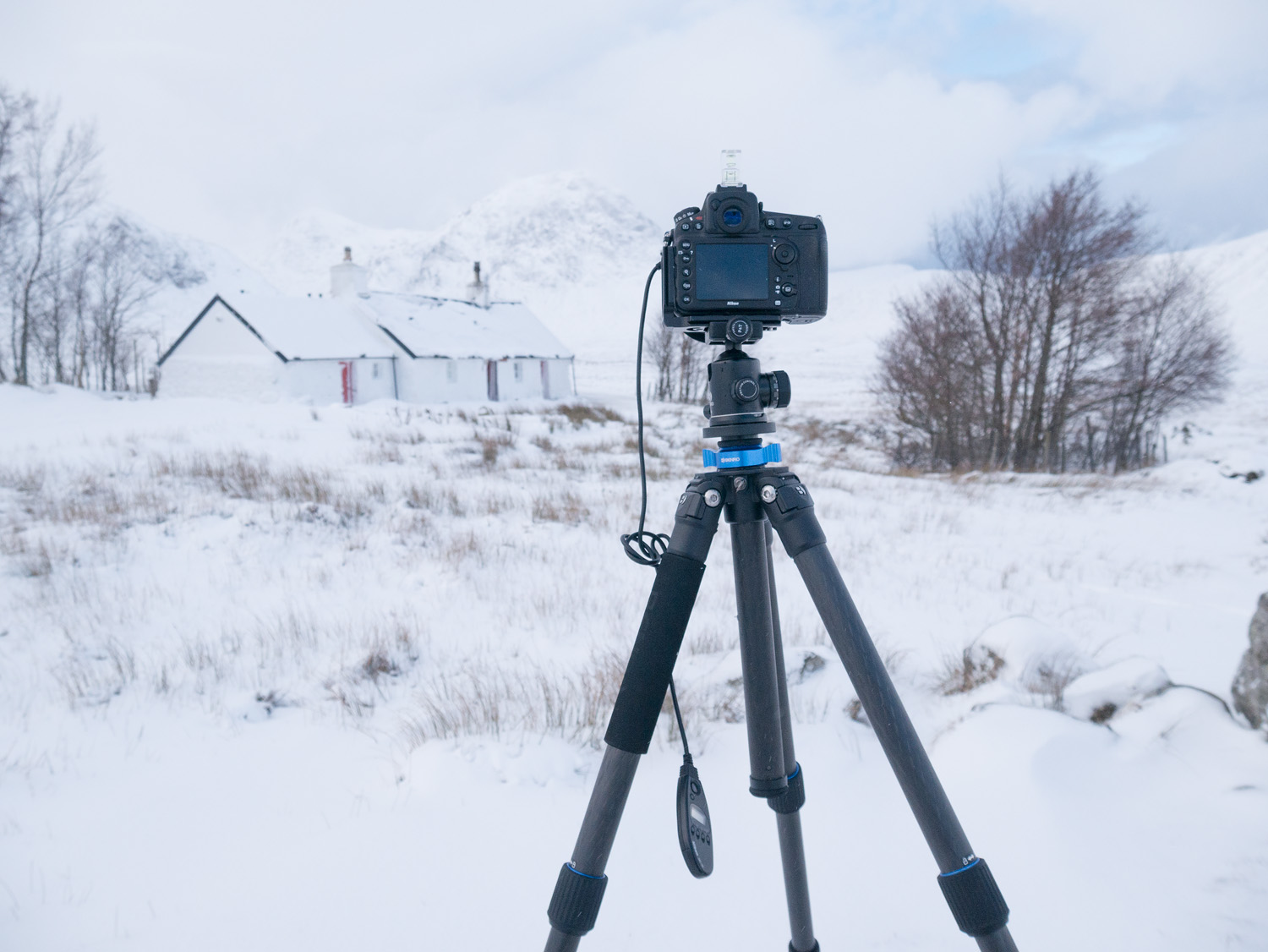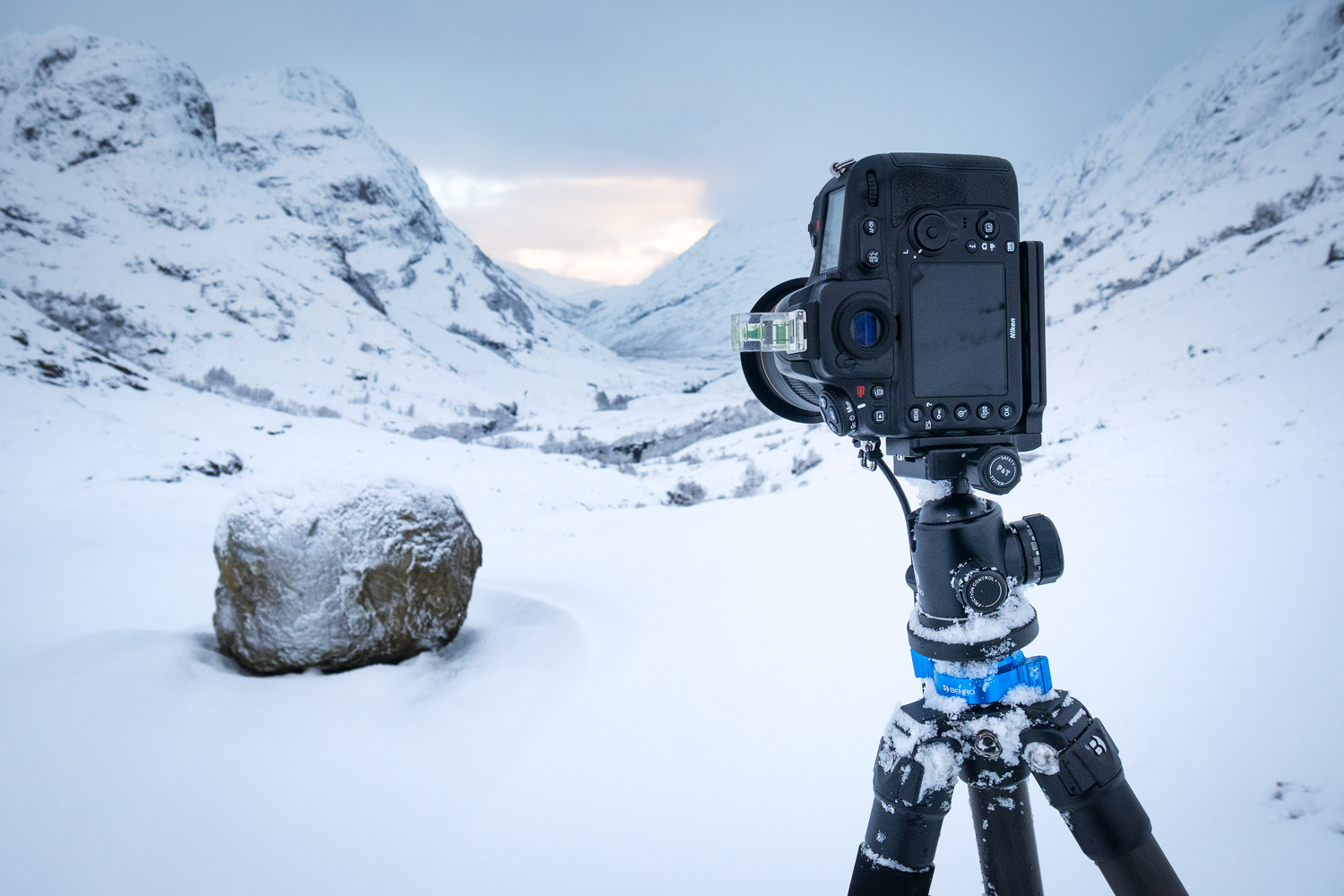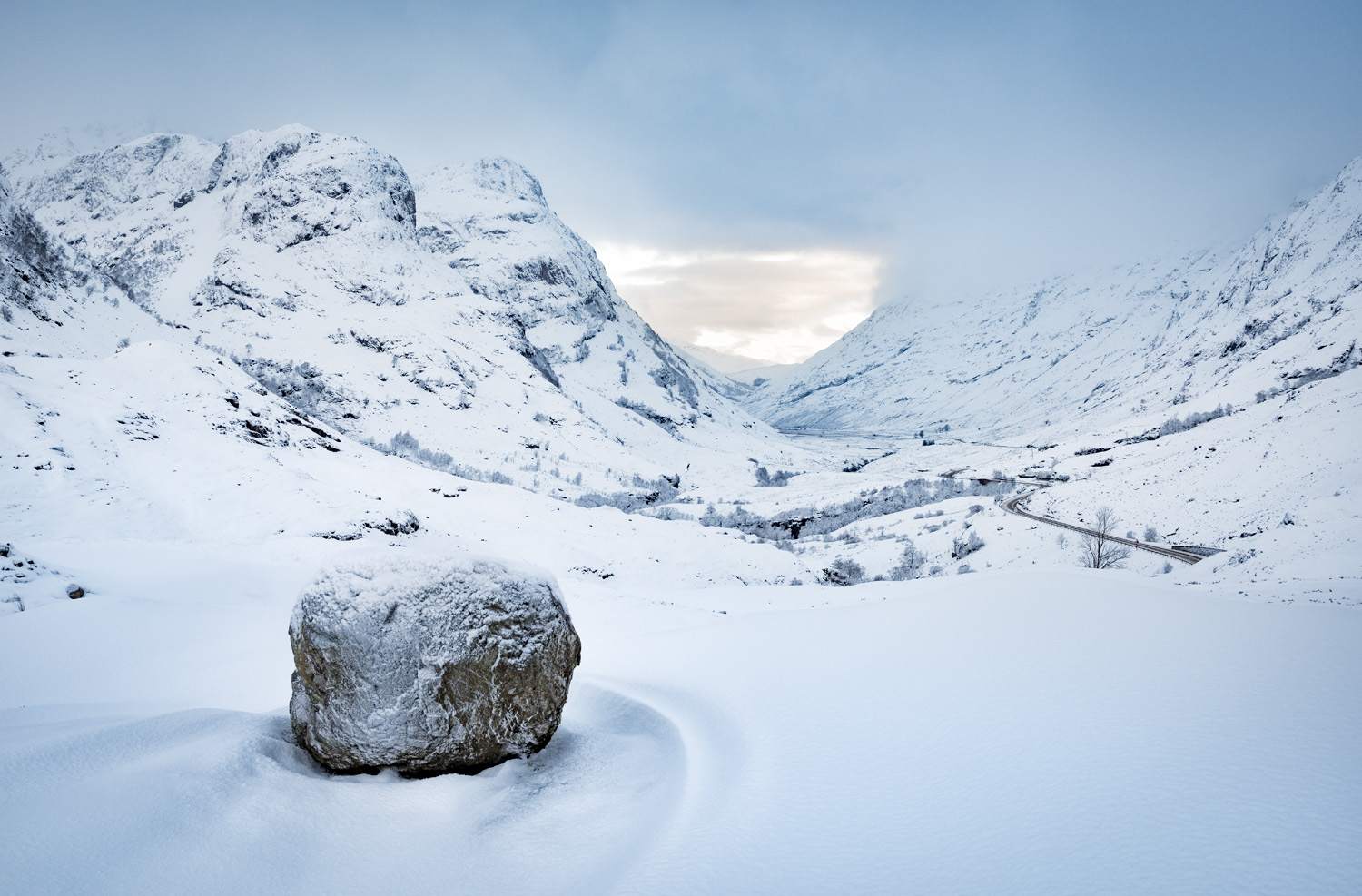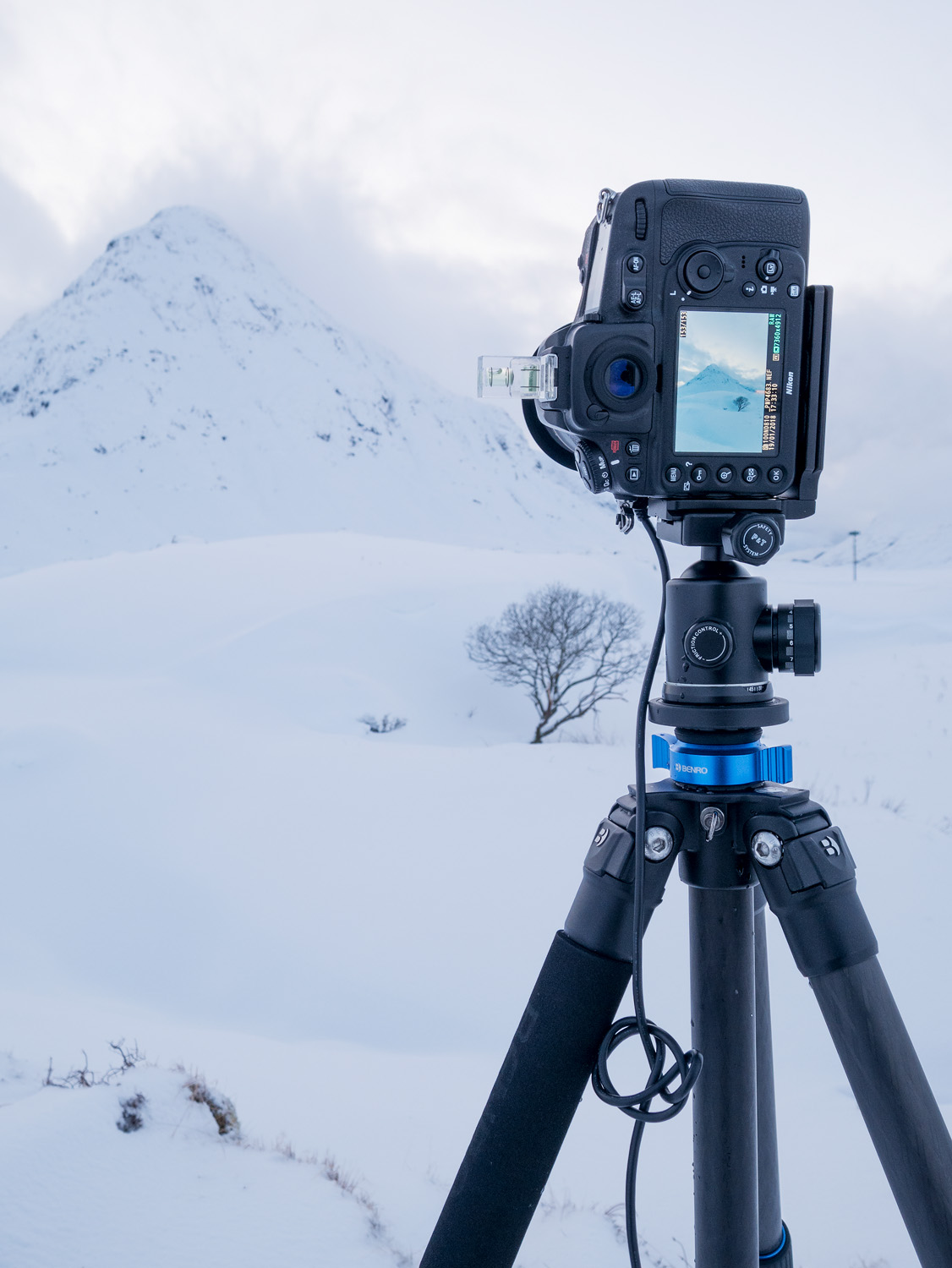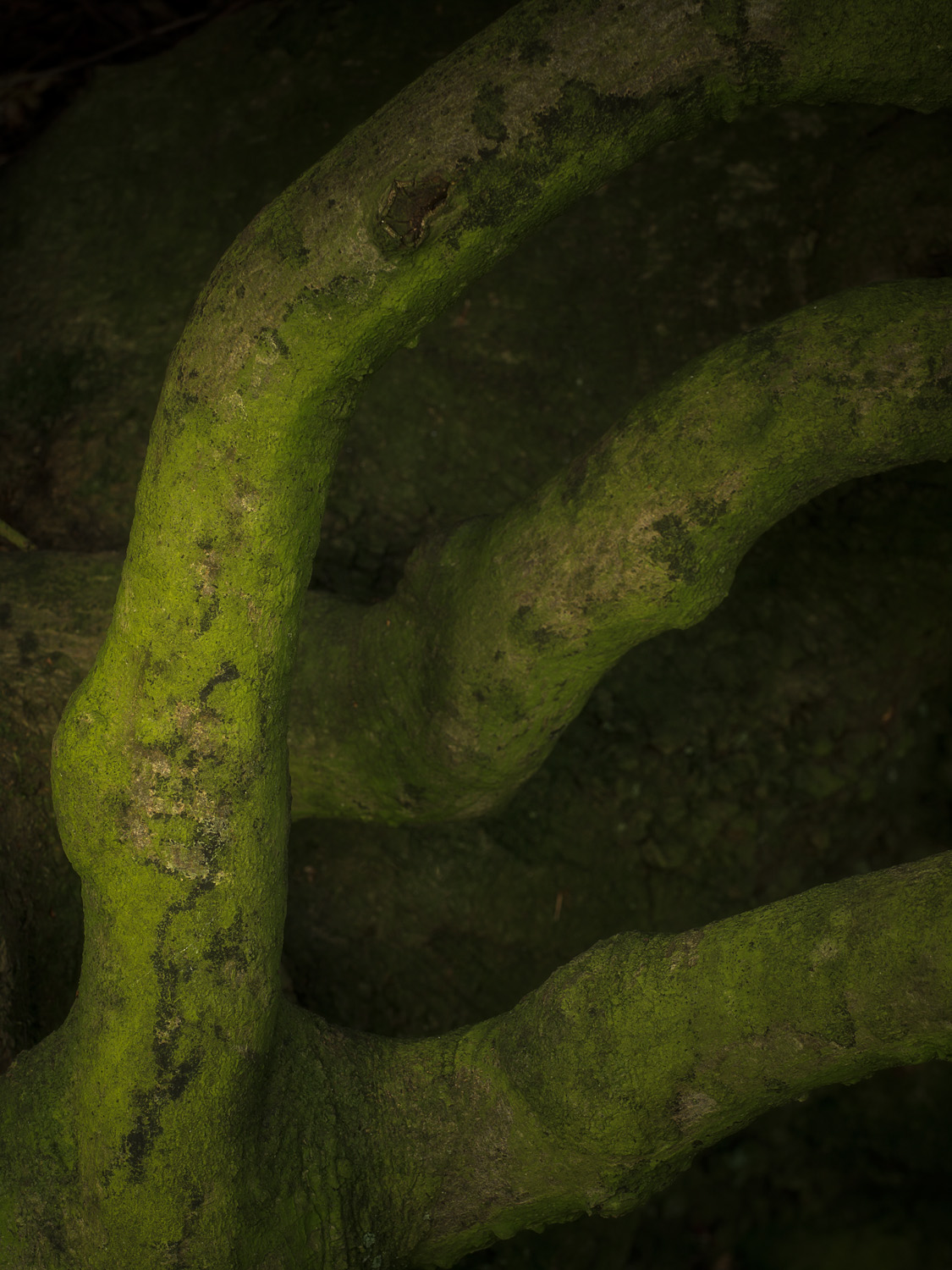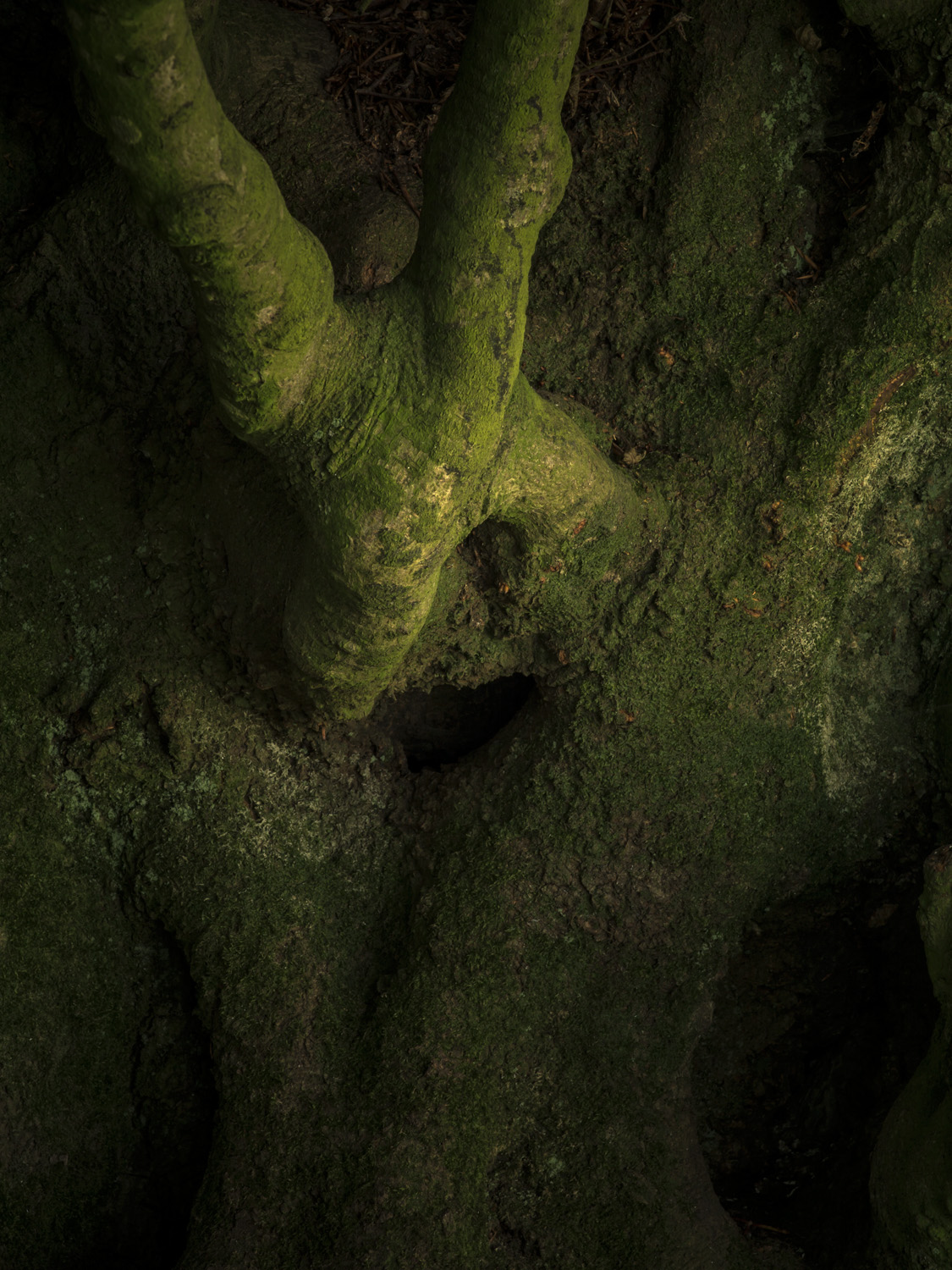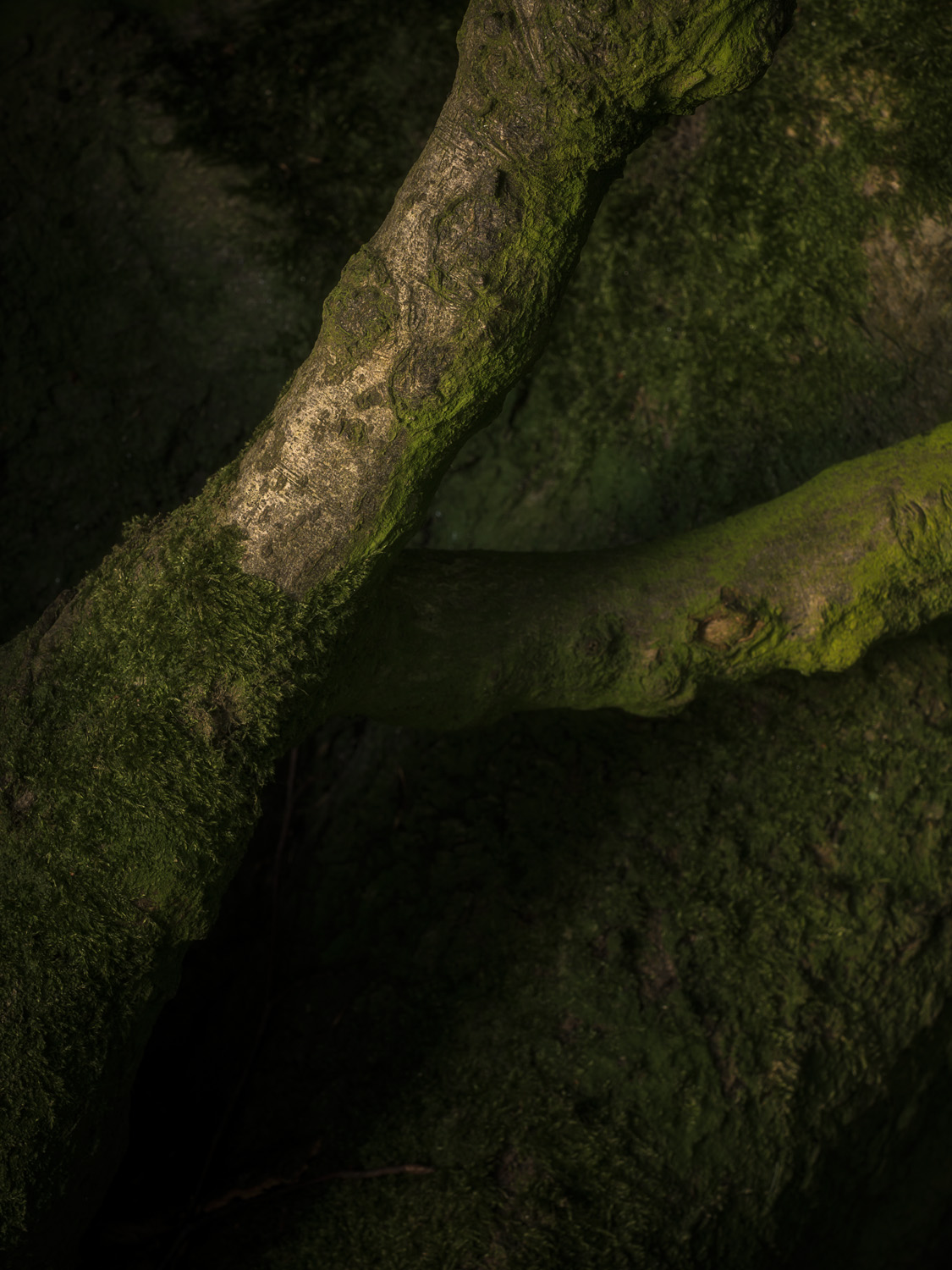I was recently honoured with an Royal Horticultural Society Gold Medal and Best in Show for my portfolio of woodlands images.
Stay local!
Having moved down to the Dorset/Hampshire border about 18 months ago I was looking forward to exploring the area and tasting its photographic delights. Then Covid came along which thwarted most of my plans (and workshops!). At least with the ’stay local’ mantra it gave me a chance to use my legs to wander around the immediate vicinity. Most of the places I frequent are probably only used by joggers and dog walkers and completely off the radar for most local photographers. They may not be stunningly picturesque locations like parts of the New Forest or the many coastal locations near me… I must admit to doing a few though! What I particularly enjoy is being able to make a unique record of a completely anonymous place. A lot of these places have names and some are even designated nature reserves but can certainly be a challenge when it comes to compositions. Another huge benefit (apart from reducing your carbon footprint) of staying local is being able to react quickly if the conditions are predicted to be atmospheric. It was very much the same when I lived near Burnham Beeches, before hardly anyone had heard of it! Admittedly some of the blame for its recent popularity can be left at my doorstep, saying that the organisation that looks after it need visitors to help with the upkeep to keep this location special, like lots of other places I'm sure.
Apologies for the ramble, all I was originally going to do was post a few images from a misty morning foray at a local nature reserve. In actual fact it was not my originally intention to end up here as my intended location just wasn’t doing anything for me so drove down the road to another spot, even then I went in completely the opposite direction to where I usually head. Am so glad I did as I think this new location is going to keep me amused for many years to come!
Classic London
I have lived and worked in and around London for almost 40 years and have never thought of it as a somewhere for landscape photography, mainly due to my lack of knowledge as to where to go! Last Friday night I decided to treat myself to one of Charlotte Gilliatt and Terry Gibbons most excellent Classic London workshop.
Not only was it run like clockwork but we were ferried from location to location by two bone fide London cabbies (Terry & Gary) who’s knowledge of this metropolis is legendary. If anyone is thinking of undertaking one of these workshops I cannot recommend Charlotte and Terry highly enough! It also helped that we were treated to some fine weather, I was still in shirtsleeves at three in the morning! I also would be lying if I said it was easy going, a 7pm start and a 6am finish is not for the faint hearted although such were the photographic opportunities presented to us the time just flew by!
Synergy Exhibition
My exhibition 'Synergy' is now officially open and can be visited at the Old Courthouse, St Leonard's Road, Windsor SL4 3BL from 11am to 11pm, ends 18th March. This exhibition is a fusion of my woodland photography and fine art woodland illustrations by the very talented Pamela Taylor.
If anyone is thinking of visiting next Saturday (23rd Feb) I shall be there in person between 11am and 3pm to guide people around, answer questions and will also have on display my extensive portfolio of prints that are not part of the exhibition. Tea, coffee and a well stocked bar is also available on site! Look forward to seeing you!
Familiarity breeds contempt?...
Due to an inordinate amount of work and other commitments recently I hadn’t picked up my camera for over a month and was beginning to have serious withdrawal symptoms. After a 4am alarm call on Saturday I headed out to my local heathland hoping for an interesting dawn and even a smidgeon of mist… as most of my fellow photographers can testify… these things never go according to plan! I was greeted with a uniform 50% grey cloud cover and a stiffish breeze which kept any hint mist from forming. Inspiration was in very short supply, to the point that I didn’t even bother to remove the lens cap. I was determined though, especially after a month of inactivity, that the morning was not going to be a washout. Without even thinking I went back to the car and headed towards my perennial fall back location of Burnham Beeches. Before I had even arrived I had in my head the exact route I would be taking passing many familiar areas and had even pre-visualised some of the images I would likely be taking! After a brief pause at a set of traffic lights I began to have thoughts that I was beginning to be become over familiar with this location and needed somewhere unfamiliar to get the old grey cells working. I quickly did a U turn (thankfully at that time in the morning there wasn’t a soul around!) and headed towards a nearby location that had been on my radar for a while but, for various reasons, haven’t visited for years.
Black Park is an area of woodland situated just to north of Slough and has running along its northern perimeter the vast complex that is Pinewood Studios. Indeed this parkland has been the location for many of the Carry On films, James Bond and quite a few of the Harry Potter movies. It is very similar in size to Burnham Beeches but the similarity ends there. The Beeches has never been anything else but woodland going back to the last ice age, therefore it is a very ancient habitat which is evident by the gnarled, characterful beech and oak trees. Black Park began as just heathland and then populated with fir trees a few hundred years ago which, over time, blocked out quite a bit of light hence the name! Tall fir trees with wide paths do have a certain appeal if you prefer regular patterns, unfortunately in dull featureless conditions it was going to be difficult to find any meaningful compositions. I made a mental note to return when we have some dense mist or fog though. After a couple of miles of aimless wandering the habitat changed from coniferous to deciduous which is where I began to feel more at home. Again this is not an ancient woodland, made evident by the very straight paths and strategically placed clearings, I did find the quietness and soft light very appealing though. I even chanced upon an area of heathland and whiled away about 15 minutes watching a small group of grazing Roe Deer that were completely oblivious to my presence. Up to this point I hadn’t even taken my camera out of the bag as I was just enjoying being out in the fresh air and relishing somewhere completely unfamiliar to me. It was only on the route back to where I had parked my car that I finally began to attune myself to the location and began to ‘see’ a few images.
I can’t see myself ever becoming bored with Burnham Beeches but I did learn a valuable lesson that taking yourself out of one’s comfort zone from time to time can only be beneficial if you want to progress your photography.
All the images were made on a Nikon D810, 70-200mm f4 and 50mm f1.2 lenses. I use a Benro TMA 38CL tripod with a Benro GD 3WH geared head. The only filter used was a Kase polariser.
Switching Allegiance
It is just over six months now since I decided to migrate from a Gitzo to a Benro tripod; I think enough time has passed for me to be able to give my honest appraisal of using the Benro Mach3 TMA38CL and the accompanying B2 ball head.
It all started back in May last year when I decided to visit my local woodland/heathland with a view to capturing some of the expected early morning mist. I know the area very well and had my 'go to' places in mind. It was about fifteen minutes before dawn when I arrived and already I had that sense of urgency that I had to make sure I was in the right place with everything set up before the light became interesting. My first port of call was a small group of Silver Birch that has always provided me with a good focal point. I set up my trusty old Gitzo GT3541XLS tripod as I had done thousands of times before. With my Nikon D810 safely in place I proceeded to wait for the right light. I didn’t have to wait long for the rising sun to infuse with a little bit of light cloud and predicted mist. With a couple of pleasing shots in the bag I picked up my tripod and camera and wandered off to another area that has previously rewarded me with interesting compositions.
It was only a short distance so I kept the tripod extended with the camera still in place (something I keep telling my workshop participants NOT to do!). After a short while hunting around I found something that I thought might be worth a few frames and proceeded to open the tripod legs in readiness. Imagine my horror when one of the legs started to wobble and just flopped to the ground! Fortuitously I was still holding the tripod (or what was left of it!) with its precious cargo still perched on top! Still not certain what had occurred I was just about able to gently remove the camera from the Manfrotto 410 head and safely rest it on the ground. Closer inspection revealed that a large lump of metal had fallen off the tripod collar where the top leg should have been securely and permanently fixed! The first thing that crossed my mind was to recover the missing piece in the hope that I could somehow fix it. It turned out that the missing piece had literally crumbled into dozens of small pieces in the long grass. As it was only meant to be a quick local morning foray I decided to call it a day and pack everything away. Back at home I was able to look in more detail as to what had happened. The first thing I noted was the amount of fine powder still evident around the void where the leg should have been and the pitted grey surface inside. This led me to believe that it had somehow corroded and cracked through metal fatigue. My first thought was that salt water had been the culprit but this was at the very top and has never come in to direct contact with the sea. Thankfully I still had my old Manfrotto carbon fibre tripod which I could use until I could sort out a repair.
Gitzo spares were quoting £130.00 plus postage for the spare part so I began thinking as to whether it was going to be worth it? The tripod was eight years old and one of the other legs was showing similar signs of corrosion. I did in fact make a bodge repair over the coming days with a combination of a large amount of Araldite, gaffer tape and a jumbo jubilee clip! It seemed to be holding but I would never feel confident enough using it on an important trip.
Whilst all this was happening I also took to social media to have a bit of a moan and ask for any recommendations regarding what to replace it with? No sooner had I started to garner people’s opinions and suggestions that I received a private message from Mark Hoskins, Brand Manager at Benro asking if he could be of assistance? Quite coincidentally I had been admiring some of the Benro tripods at last years Photography Show with Pete Hyde who was also thinking of a change. I always like to try before I buy so Mark very kindly offered to send me a display model and would I like to choose one? After much deliberation I decided to give the Benro Mach3 TMA48CXL a go, the reason being that it seemed a similar spec to my old Gitzo GT3541 XLS.
When it arrived my first reaction was that it was a hefty piece of equipment! The feel of it though was one of quality, from the very attractive carbon fibre weave to the very hi-tech looking blue anodized column release and similar accents on the leg twist locks. As there was no head attached I quickly popped on my Manfrotto 410 which instantly increased the weight even more. As it was only on loan to me I thought it wise to try it out in my local woodland rather than give it a battering on the coast. One addition on my Gitzo, that I can’t do without, especially in woodland, were the leg spikes. Using a tripod with leaf litter underfoot is like placing your tripod on a springy mattress! Fortunately the Benro came supplied with a set of stainless steel spikes, albeit shorter than Gitzo’s long spikes but they seemed to work fine.
The immediate difference between the old and new was that the Benro leg sections were shorter meaning that I had to extend three leg sections instead of the normal two to get to the same eye level height as on my Gitzo (very rarely did I have to use the bottom leg sections on the XLS). This resulted in undoing nine rubber twist locks instead of my usual six. It did indeed surprise me that it really didn’t take that much longer to extend or retract the legs and after a short while became second nature. The leg sections on the TMA48CXL were also considerably thicker giving reassuring stability. Then there was the build quality. Gitzo have long held the reputation for using top quality materials and were built for professional reliability. It didn’t take me long to realise that they had met their match!
Inevitably the time came when I had to hand it back. By then though I had made the decision that Benro was going to supply my next tripod. I still had the niggling doubt though, as to whether the TMA48CXL was the right model for me. It was incredibly stable, however it did weigh more than my old Gitzo, and with it being more compact seemed to feel bulkier and even heavier so I was having a few doubts. After a quick conversation with Mark he suggested that the TMA38CL, the next model down, was probably the one to go for and he would arrange for one to be sent to my studio from their distribution centre together with their B2 ball head which would compliment it perfectly.
I didn’t have to wait long before the courier knocked on my door with a large oblong shaped box! As with most items of brand new photographic equipment it is always quite exiting to unbox it, something that people even make videos of! Unlike the loan model this brand new tripod also came complete with a very sturdy, padded carry bag which when opened revealed the object of desire encased in a neat, bright blue, drawstring dust bag. The tripod itself looked incredibly smart as per the loan model. Aside from the main item I discovered other goodies lurking in the side pockets. A set of short stainless steel spikes, a small spanner, two sizes of allen keys, a short column and a carry strap for the padded bag. Remembering back to when I took delivery of my Gitzo I think it only came with a dust bag and an allen key. Another plus (which was also on my loan model) was that one of the legs has a cold weather friendly foam leg warmer. Similarly when I unpacked the B2 ball head it just oozed quality.
Up to this point I was still in a quandary as to whether or not to attach my trusty 410 head or give the ball head a try? I’ve been using a Manfrotto 410 geared head for as long as I can remember (I’ve had three over the years!) and find the micro adjustments suit my style of composition. The only other ball head I’ve owned (and still do!) was the one that came supplied with my Benbo Trekker. There’s no quick release tripod plate, you just screw it into the bottom of your camera and with no friction control, it flops around like a babies head once released! The 410 head was duly transferred over, spikes screwed in and I was ready to go!
Anything new takes some getting used to but the loan model prepared me for some of the slight differences, more twist lock collars to turn for example. I also decided to keep the centre column in place for the time being, not that I ever use it fully extended (more advice I frequently give!) but sometimes it is quite handy when you need that extra couple of inches in height and don’t want to start fiddling with the length of the legs. I still might revert to the short column in due course as I have trapped my fingers more than once when closing the legs, it also makes it more convenient to carry around without the centre column. After a couple of long walks I rapidly became aware that the weight of the 410 head just didn’t seem to compliment the shorter, lighter, more compact TMA38CL, it was very top heavy! I eventually saw sense and replaced it with the B2 head and I must admit that it is now in perfect balance. Reverting to the ball head also meant that I could now try out an Arca Swiss fit ‘L’ bracket which I had viewed with envy over the years. Yes, I could have converted one of my 410 quick release plates to take an L bracket but it just seemed such a faff! Being able to revert back and forth from landscape to portrait without having any major adjustments was a revelation! At this point I am also going to admit to buying and fitting a new set of longer spikes, I found that the supplied shorter versions just weren’t able to pierce areas of dense leaf litter.
The past six months has been my busiest time of the year, Autumn and Winter; apart from a quick tighten of the leg screws on the odd occasion it has performed without fault. My latest trip to Glen Coe for a week certainly put it through its paces. In and out of rivers, icy lochs, snowdrifts and rocky scree combined with temperatures ranging from +10 to -10. The lighter weight of this tripod compared to the heavier Gitzo and 410 head certainly made the lengthier treks more comfortable too! Something I also never thought about before was the effect of tumbling a tripod in and out of a car boot would have. My Gitzo is covered in scratches and dents, the supplied padded bag that came with the Benro has been invaluable in protecting it and keeping it looking pristine! With my design/marketing hat on I’d just like to say that all these extra’s show that Benro are prepared to go that extra mile towards total customer satisfaction.
As those people that have attended some of my lectures can testify I can only but praise these wonderful pieces of photographic equipment and have no hesitation in recommending them to my many workshop participants. Whilst they also may not be the cheapest tripods on the market (much cheaper than the Gitzo though!) you certainly get what you pay for! No longer are they the poor cousins.
Thank you for taking the time to read my ramblings!
Paul
Autumnal Awakenings
Despite the recent hot September weather the nights are drawing in and the morning air temperature is noticeably cooler. All signs of the impending autumn.
The following images were all seen and realised within a couple of hours during an early morning walk through my neighbouring woodland of Burnham Beeches.
DARK BOUGHS
Martinsell Hill in Wiltshire is one of the highest points in the area with spectacular views over the Vale of Pewsey. On a clear day the spire of Salisbury Cathedral can be seen, over 25 miles away! It is also of special historical importance having once been an important Iron Age hill fort, the remnants of which can still be seen in the various banks and ditches that populate the area.
Along the south east facing escarpment is a line of weather beaten Beech trees. These trees have adapted to the harsh conditions and in doing so have been stunted in growth taking on an almost mystical, otherworld appearance reminiscent of a scene from a J R R Tolkien novel.
I have made images of this particular tree many times, it being one of the most characterful. During my last visit I began to look more closely at the the shapes and forms of its many gnarled and stunted limbs. Under the overcast conditions that I had to work with I began to see the beauty in the dark and delicately lit boughs.

